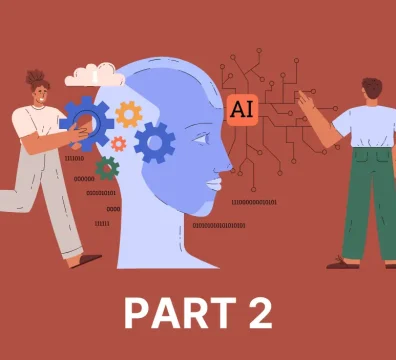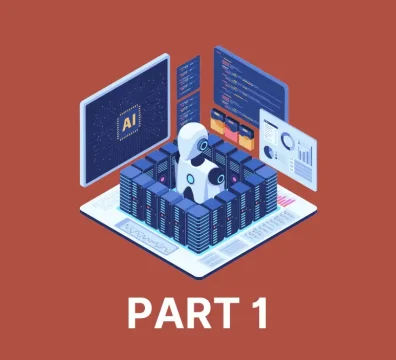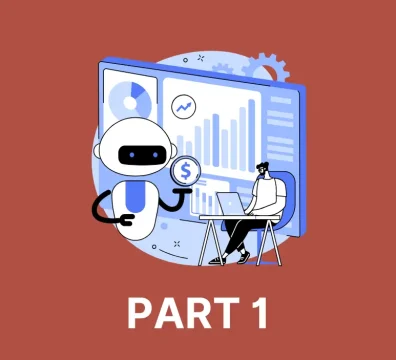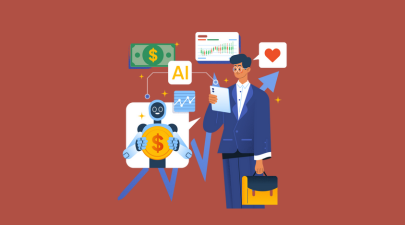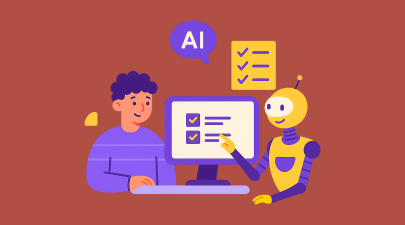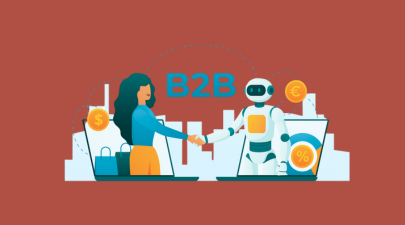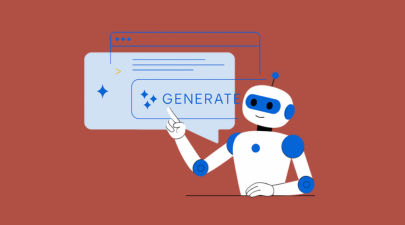AI for B2B sales represents more than just another wave of automation—it is the foundation for a smarter, predictive, and adaptive sales ecosystem. As artificial intelligence becomes deeply integrated into CRM systems, marketing platforms, and sales pipelines, businesses gain the ability to analyze buyer behavior, predict opportunities, and personalize engagement in ways never before possible. From intelligent lead scoring and conversation analytics to generative AI-powered proposals and chat-based deal support, AI for B2B sales is transforming the art of selling into a precise, data-informed science.
The rise of AI in business environments has been fueled by rapid advancements in machine learning, natural language processing, and data analytics. Companies that adopt AI for B2B sales are not only optimizing operational efficiency but also redefining customer relationships through real-time insights and predictive intelligence. Unlike B2C environments where decisions are often emotional and fast-paced, B2B sales involve multiple stakeholders, long-term partnerships, and high-value contracts—making AI’s analytical precision indispensable. As adoption accelerates, organizations that strategically leverage AI for B2B sales are setting new benchmarks for growth, agility, and competitive advantage in the digital era.
Table of Contents
- Understanding the Core of AI for B2B Sales
- The Role of Data in AI-Powered B2B Sales
- Predictive and Prescriptive Analytics in B2B Sales
- AI-Driven Account-Based Marketing (ABM)
- Human-AI Collaboration in Sales Teams
- Measuring ROI and Performance of AI in B2B Sales
- AI Use Cases Across the B2B Sales Funnel
- Generative AI in B2B Sales
- Case Studies — Real-World Success Stories
- AI Tools and Platforms for B2B Sales
- Implementation Strategy for AI in B2B Sales
- Future Outlook of AI for B2B Sales
Understanding the Core of AI for B2B Sales
Artificial intelligence has become a critical foundation for modern enterprise growth, and nowhere is its impact more transformative than in the realm of B2B sales. To fully grasp how AI for B2B sales reshapes traditional models, it is essential to explore what AI truly means in the context of selling, why it has become indispensable, and how the modern AI sales stack empowers businesses to turn raw data into actionable intelligence.
Defining AI for B2B Sales
AI for B2B sales refers to the use of advanced artificial intelligence technologies to analyze data, predict behaviors, automate processes, and optimize decision-making across the entire sales lifecycle. Unlike simple rule-based automation tools, AI systems continuously learn and adapt through exposure to historical and real-time data, enabling sales organizations to make better-informed decisions faster.
In the sales context, AI for B2B sales functions as a digital co-pilot. It helps sales representatives identify high-value prospects, determine the best engagement strategy, forecast deal outcomes, and even craft personalized communication. The focus is not just on replacing manual work but on amplifying human intelligence with machine precision. Through algorithms that analyze past deals, customer interactions, and behavioral patterns, AI predicts which leads are most likely to convert and how best to nurture them over time.
Key technologies enabling AI for B2B sales include machine learning (ML), natural language processing (NLP), computer vision, and predictive analytics. Machine learning models analyze large datasets to detect patterns that may escape human observation, such as subtle buying signals or shifts in engagement. NLP allows systems to interpret text and speech in natural human language, making conversational AI tools—like chatbots and email assistants—capable of managing customer interactions autonomously. Computer vision, though more common in B2C environments, finds B2B applications in product recognition, document automation, and visual data analysis for industrial sales. Predictive analytics ties all these technologies together, transforming vast data points into forward-looking insights that guide sales strategies.
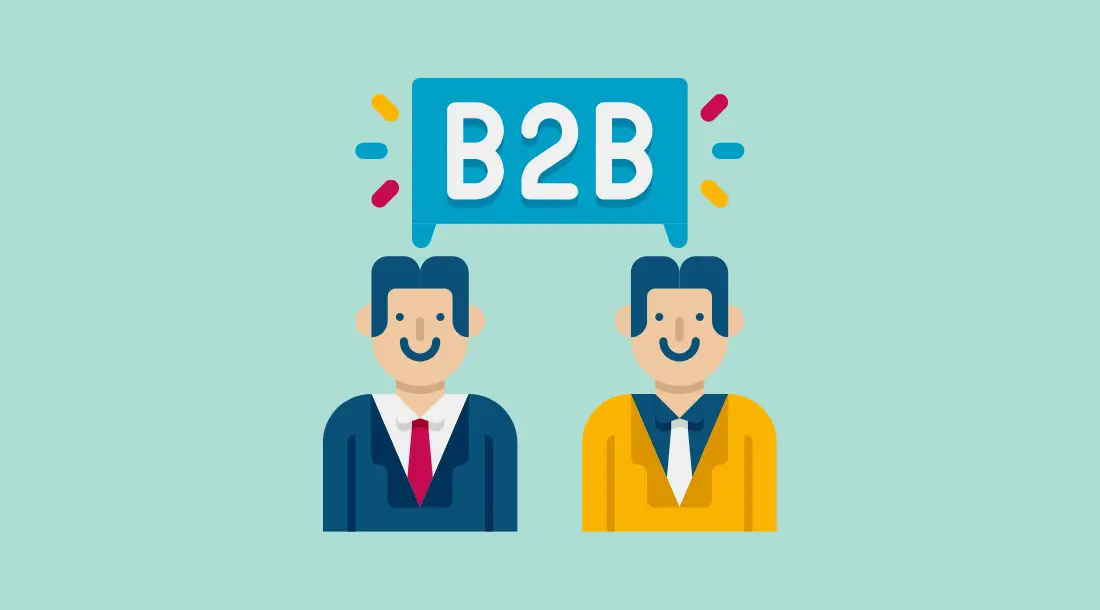
The evolution from CRM automation to intelligent, adaptive systems marks a defining milestone for AI for B2B sales. Traditional CRM platforms focused primarily on data entry, contact management, and pipeline tracking. However, with AI integration, CRMs have evolved into dynamic systems that analyze behavior, score leads automatically, and even recommend next steps. Modern AI-powered CRMs—such as Salesforce Einstein, HubSpot AI, and Microsoft Dynamics 365—illustrate this shift from static reporting to predictive and prescriptive intelligence. They transform the CRM from a passive record-keeping tool into an active participant in the sales process, constantly learning from interactions and outcomes to refine its recommendations.
AI for B2B sales thus represents a paradigm shift—from manual, intuition-driven processes to scalable, data-informed selling strategies. It redefines how sales teams operate, empowering them with real-time intelligence that shortens cycles, improves accuracy, and enhances every customer interaction.
Why AI Matters in B2B Sales
The importance of AI for B2B sales lies in its ability to address the structural challenges inherent to B2B transactions. Unlike B2C, where purchase decisions are often individual and immediate, B2B sales cycles are long, complex, and involve multiple stakeholders. A typical enterprise deal may span months or even years, requiring coordinated communication, multi-stage approvals, and constant relationship management. In such an environment, traditional sales methods often struggle to maintain consistency and insight across the pipeline. AI fills this gap by ensuring every decision is guided by data rather than assumption.
AI for B2B sales brings order to chaos by managing long buying cycles and multi-stakeholder decision-making with precision. Predictive models can identify which stage a buyer is likely in and which decision-makers hold the most influence. They can analyze engagement data to detect when a deal is at risk or when a prospect is ready to move forward. This real-time visibility is invaluable for aligning resources and ensuring the right actions happen at the right time.
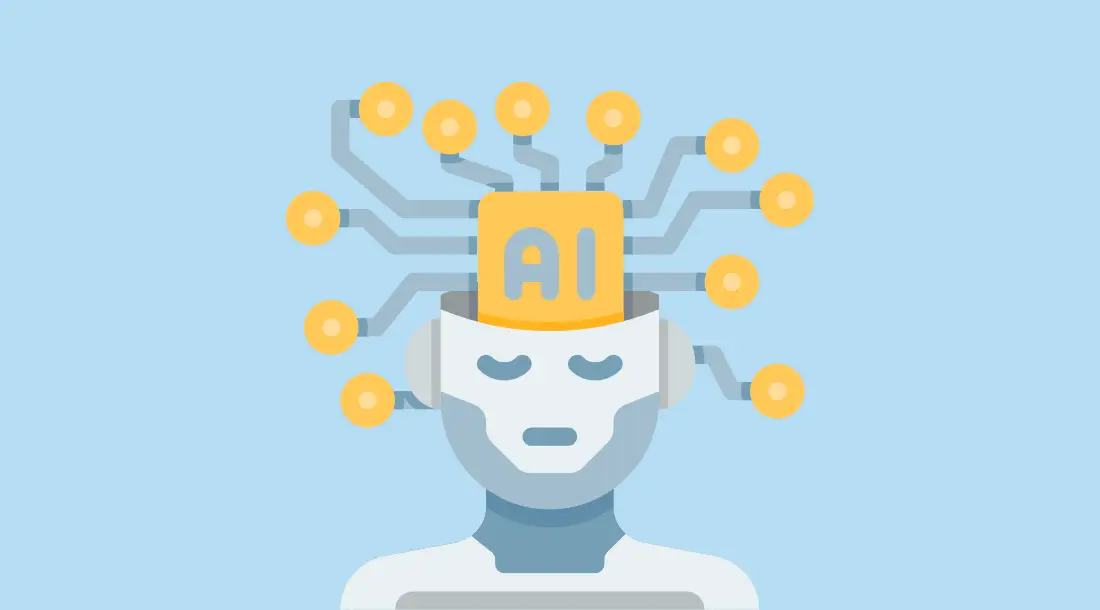
Another critical reason AI for B2B sales matters is the modern phenomenon of data overload. Sales organizations today generate and collect more information than ever—from CRM logs and email correspondence to website behavior and social signals. Yet, most teams use only a fraction of this data effectively. AI changes that. Through automation and intelligent analytics, it filters noise, surfaces key insights, and delivers them in digestible formats for human decision-makers. The result is faster responses, higher accuracy, and better prioritization.
Finally, personalization has become a universal expectation, even in B2B settings. Buyers expect messages, solutions, and offers that reflect their industry, pain points, and goals. AI for B2B sales enables personalization at scale by analyzing historical customer data, behavioral patterns, and contextual cues. For instance, AI-driven account-based marketing (ABM) systems tailor content and engagement for each company, while generative AI tools draft outreach messages aligned with each prospect’s tone and needs.
In short, AI for B2B sales matters because it empowers organizations to operate with foresight, efficiency, and empathy. It enables them to understand not just what customers need, but when and why—turning data into relationships and relationships into revenue.
The AI Sales Stack
At the heart of every AI for B2B sales strategy lies a robust technological framework known as the AI sales stack. This layered architecture integrates data, analytics, automation, and intelligence into a cohesive system that supports every stage of the sales journey. It transforms how organizations collect information, interpret insights, and execute actions—all with the goal of optimizing performance and revenue outcomes.
The core layers of the AI sales stack can be broken down into four components:
- Data – The foundation of AI for B2B sales. This includes CRM data, transactional history, marketing engagement, customer interactions, and external signals such as social or firmographic data.
- Analytics – Once data is aggregated, analytics tools interpret it through machine learning models that identify correlations and predict outcomes.
- Automation – The layer where AI transforms analysis into action, automating repetitive tasks such as lead scoring, outreach, and pipeline tracking.
- Intelligence – The highest layer, where insights become prescriptive. AI suggests optimal strategies, pricing recommendations, and even negotiation tactics based on context and probability.
CRM and AI integration is the backbone of this ecosystem. Platforms like Salesforce, HubSpot, and Zoho CRM embed AI capabilities directly within daily workflows, enabling predictive forecasting, opportunity scoring, and sales automation without requiring manual intervention. For example, a sales rep can receive automatic alerts when a lead’s engagement score changes or when sentiment analysis indicates a risk of churn.
Beyond CRM integration, the AI-enabled B2B sales ecosystem includes tools for conversation intelligence (Gong, Chorus), predictive engagement (Clari, People.ai), and generative content creation (ChatGPT, Jasper, Writer). Together, these applications create a unified environment where sales data flows seamlessly between marketing, operations, and customer success.
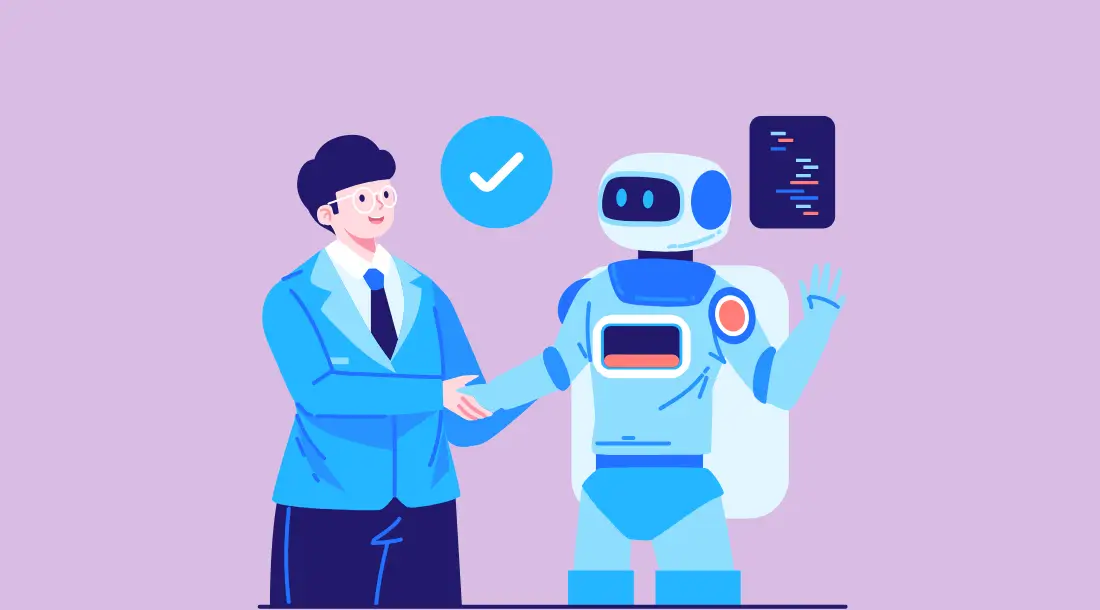
Ultimately, the AI sales stack reflects a vision of interconnected intelligence—a system where data informs decisions in real time, and every action feeds new learning back into the model. For modern enterprises, adopting AI for B2B sales isn’t about adding another software layer; it’s about constructing a self-improving engine that continuously refines how sales teams engage, strategize, and perform in a complex digital marketplace.
The Role of Data in AI-Powered B2B Sales
The success of AI for B2B sales relies heavily on one fundamental element: data. Artificial intelligence can only be as powerful as the data that feeds it. In a landscape where enterprises handle vast amounts of information across CRMs, ERPs, marketing platforms, and customer service systems, data has become both a strategic asset and a competitive differentiator. Data-driven sales are not a future vision—they are a present reality. AI for B2B sales transforms this raw data into actionable intelligence, helping organizations predict buying behavior, optimize lead targeting, and deliver personalized experiences at scale.
Understanding how data operates within AI for B2B sales involves looking at three critical dimensions: where the data comes from, how its quality and governance are maintained, and how integration across systems enables a unified intelligence layer. Each of these dimensions determines whether an organization can truly harness AI to move from reactive to predictive sales performance.
Data as the Fuel of AI
In the world of AI for B2B sales, data functions as the lifeblood that keeps every system operational and intelligent. Without high-quality data, even the most advanced AI algorithms cannot deliver meaningful insights. Data provides the context, structure, and behavioral patterns that enable AI to understand how buyers interact, what triggers conversions, and where opportunities lie.
The foundation begins with data sources. Modern B2B organizations generate and store information from multiple interconnected platforms, creating a rich but complex digital footprint. Common data sources that power AI for B2B sales include:
- CRM systems: Customer relationship management tools like Salesforce or HubSpot serve as central repositories for lead and customer data. They record interactions, deal stages, and communication histories, forming the backbone of AI analysis.
- ERP systems: Enterprise resource planning software provides operational and financial data, including order history, invoices, and product availability. Integrating ERP data with AI for B2B sales helps align sales predictions with real-world capacity and supply chain conditions.
- Website analytics: Digital touchpoints reveal user behavior—page visits, dwell times, downloads, and forms completed. AI uses this behavioral data to score engagement and prioritize outreach.
- Email and communication platforms: Email engagement data, such as open rates and response times, help AI models detect interest patterns and recommend follow-up strategies.
Social media and third-party data: Platforms like LinkedIn and business directories contribute demographic, professional, and intent signals that enrich lead profiles. - IoT and connected devices: For industries that rely on connected hardware or sensors, IoT data helps predict product needs, maintenance schedules, and cross-sell opportunities.
All these data sources converge into a structured pipeline that allows AI systems to learn continuously. The process typically follows several stages: data collection, cleansing, transformation, model training, and deployment. During training, algorithms consume historical data to identify trends and relationships—such as which interactions lead to conversions or which product categories attract specific buyer segments. Once trained, the AI model uses real-time data to update forecasts and recommendations dynamically.
The reason data is often referred to as the “fuel” for AI for B2B sales is because of its cyclical nature. Every new customer interaction generates more data, which in turn refines the algorithm’s predictions. The better the data pipeline, the more intelligent and adaptive the AI becomes. In this sense, data is not merely an input—it is the foundation of the entire sales intelligence engine.
Data Quality and Governance
For AI for B2B sales to deliver reliable insights, data quality and governance must be prioritized. Poor data quality can lead to inaccurate predictions, misaligned campaigns, and lost revenue opportunities. The power of AI lies in its ability to detect patterns, but when fed with incomplete, inconsistent, or duplicate data, those patterns can be misleading or even harmful.
Maintaining structured and clean data begins with standardization. Every data point—from customer names and contact information to deal status—must follow consistent formatting and validation rules. This ensures that when AI models analyze the data, they can easily identify correlations and trends. A clean dataset improves lead scoring accuracy, enhances forecasting precision, and reduces the time sales teams spend on manual corrections.
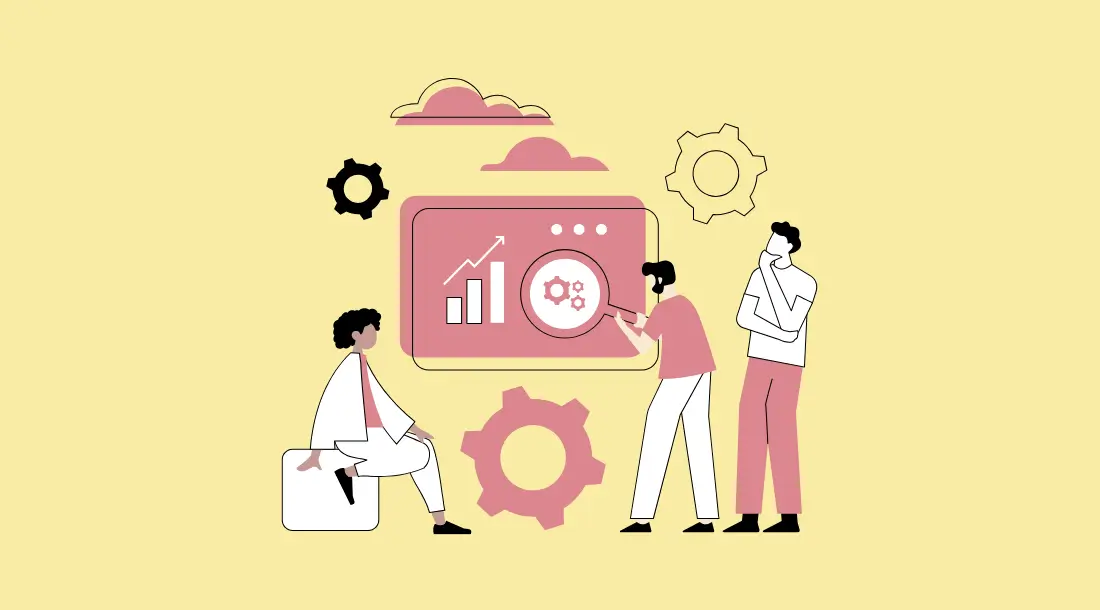
However, ensuring data quality goes hand-in-hand with robust data governance. As organizations expand their use of AI for B2B sales, they must also navigate increasingly complex privacy and compliance landscapes. Data protection laws such as the General Data Protection Regulation (GDPR) in the EU and the California Consumer Privacy Act (CCPA) in the United States impose strict guidelines on how customer information can be collected, processed, and stored.
To manage this effectively, organizations should implement a governance framework that includes:
- Clear data ownership: Assigning responsibility for specific datasets prevents accountability gaps and ensures that data integrity is maintained across departments.
- Data lifecycle management: Defining how long data is stored, how it is archived, and when it should be deleted ensures compliance with privacy laws and prevents outdated information from contaminating models.
- Access control: Role-based permissions and encryption help protect sensitive information while allowing authorized AI systems to process it for sales insights.
- Audit trails and monitoring: Regular reviews help track how data is used and ensure that AI-driven decisions remain transparent and ethical.
In essence, data governance in AI for B2B sales is not just about regulation—it is about trust. Buyers are becoming more aware of how their data is handled, and organizations that maintain transparent and ethical data practices are more likely to build lasting relationships. Clean, compliant data does not only protect an organization from legal risk—it strengthens the accuracy, reliability, and credibility of AI-driven sales intelligence.
Integrating Data Across Systems
In most B2B organizations, data exists in silos—spread across marketing, sales, customer support, and finance platforms. This fragmentation limits visibility and undermines the potential of AI for B2B sales. When systems fail to communicate, the AI model cannot access the complete customer journey, leading to partial insights and disconnected decision-making. Integration is therefore a cornerstone of successful AI implementation in sales.
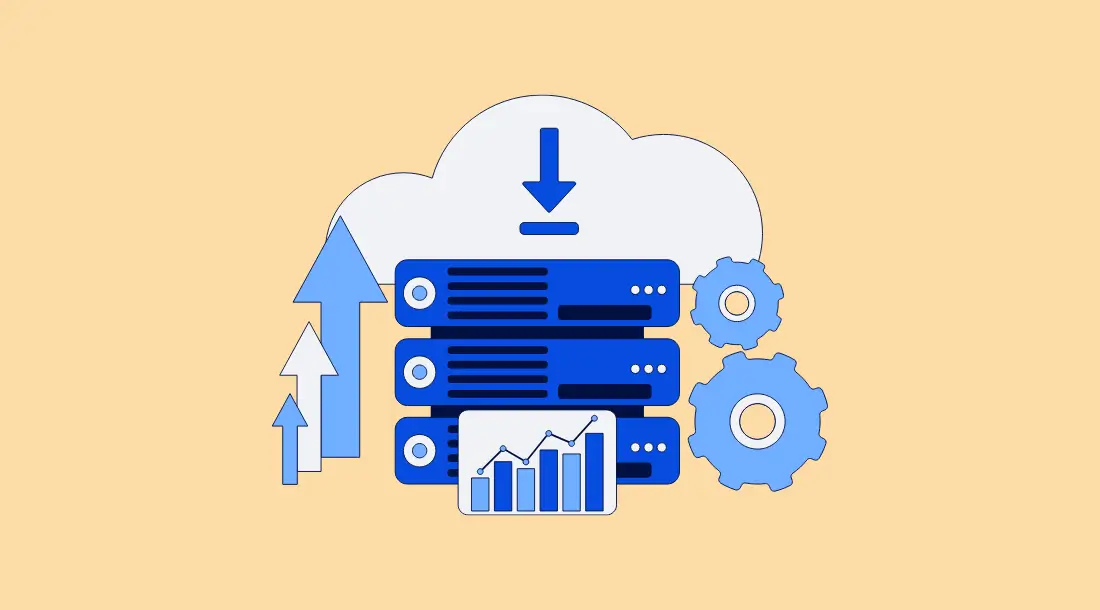
Breaking silos requires both cultural and technological shifts. On the organizational side, departments must align around shared goals and data standards. This means moving away from isolated reporting and toward collaborative data ecosystems. On the technical side, modern integration platforms and APIs allow real-time synchronization between systems, ensuring that every customer touchpoint is captured and analyzed holistically.
A fully integrated data ecosystem for AI for B2B sales typically includes the following components:
- Unified data architecture: All data sources—CRM, ERP, marketing automation, and customer service systems—feed into a centralized platform where AI can analyze them collectively.
- Cloud data lakes: These repositories store both structured and unstructured data, enabling scalable storage and processing. AI algorithms can then draw from this unified pool to deliver cross-departmental insights.
- Real-time synchronization: Continuous data flow ensures that the AI model is always learning from the latest interactions. This is essential for functions such as predictive forecasting and deal prioritization, where outdated data can distort results.
- Data normalization and mapping: Standardizing formats and identifiers (e.g., customer IDs, company names) ensures consistency across platforms, reducing the risk of duplicate or conflicting entries.
- Automated feedback loops: When AI models make predictions or recommendations, those outputs feed back into the data pool to refine future analyses.
Integrating data across systems transforms AI for B2B sales from a fragmented set of tools into a cohesive intelligence network. It allows organizations to see the entire sales funnel—from initial lead generation to customer retention—as a continuous, data-driven cycle. This holistic visibility helps sales leaders identify bottlenecks, forecast trends with greater precision, and coordinate cross-functional strategies that align marketing and sales efforts.
In a world where B2B buyers interact across multiple digital channels, integration is no longer optional. It is the key to unlocking the full potential of AI for B2B sales. By connecting data across systems, businesses can ensure that every insight, prediction, and recommendation is built on a complete and accurate understanding of the customer journey.
Predictive and Prescriptive Analytics in B2B Sales
In the evolving landscape of AI for B2B sales, data-driven decision-making has shifted from being descriptive—focused on understanding what happened—to becoming predictive and prescriptive, focused on anticipating what will happen and suggesting what actions to take next. Predictive and prescriptive analytics represent the most advanced stages of artificial intelligence application in sales, allowing organizations to move from reactive management to proactive optimization.

Predictive analytics in AI for B2B sales leverages large volumes of historical and real-time data to forecast buyer intent, churn risk, revenue potential, and overall market trends. It empowers companies to anticipate opportunities and challenges before they occur, giving sales teams a head start in managing relationships and achieving targets. On the other hand, prescriptive analytics takes this a step further—it doesn’t just predict outcomes, it recommends specific actions to achieve optimal results. By combining these two layers, AI for B2B sales enables an intelligent, self-improving system that can forecast demand, allocate resources efficiently, and guide representatives toward the best decisions for each customer and opportunity.
Predictive Insights
Predictive insights are the backbone of AI for B2B sales. They give businesses the ability to foresee customer behavior, market trends, and sales outcomes with a high degree of accuracy. By identifying patterns hidden in vast datasets, predictive analytics transforms historical records into a roadmap for future success. In the context of B2B transactions—where sales cycles are long and decision-making involves multiple stakeholders—predictive insights enable precision targeting, proactive engagement, and better forecasting.
AI for B2B sales applies predictive analytics in several critical areas that determine revenue performance:
- Anticipating buyer intent: AI models analyze diverse signals such as website visits, email engagement, content downloads, and social activity to determine which prospects are actively researching solutions. These intent signals are then scored to prioritize which accounts are closest to making a purchasing decision. For instance, if a potential client’s procurement team begins engaging heavily with pricing content or demo requests, AI can alert sales representatives to initiate personalized outreach at the perfect time. This allows businesses to replace guesswork with data-backed precision, ensuring sales efforts focus where conversion potential is highest.
- Early churn detection: Retention is as vital as acquisition in B2B sales, and predictive analytics plays a critical role in identifying churn risks before they materialize. AI for B2B sales continuously monitors engagement levels, product usage data, and communication patterns to detect subtle warning signs—such as declining activity, reduced responsiveness, or unresolved service issues. When these indicators surface, AI systems can trigger alerts and recommend targeted retention campaigns. By catching dissatisfaction early, companies can take corrective action to preserve valuable relationships and stabilize revenue streams.
- Forecasting customer lifetime value (CLV): Predictive analytics also estimates the long-term value each customer will bring, helping organizations allocate resources effectively. By combining factors such as purchase frequency, average deal size, renewal rates, and engagement metrics, AI models calculate a projected CLV score for every account. This allows sales teams to differentiate between one-time opportunities and strategic clients who warrant long-term investment. Moreover, CLV forecasting helps with territory planning, budget allocation, and prioritization of customer success efforts—ensuring sustained profitability.
The beauty of predictive insights in AI for B2B sales lies in their compounding accuracy. Every interaction, every transaction, and every decision adds new data that refines the model’s predictions. Over time, AI systems evolve from being passive observers to active forecasters, capable of predicting not just individual outcomes but entire market shifts. As competition intensifies, organizations that invest in predictive analytics are better positioned to adapt quickly, engage intelligently, and sell strategically in an environment defined by change and complexity.
Prescriptive Sales Intelligence
While predictive analytics tells organizations what is likely to happen, prescriptive analytics answers the more crucial question: what should we do about it? Prescriptive sales intelligence represents the next level of AI for B2B sales—one where data-driven insights evolve into actionable guidance. It combines the predictive power of machine learning with optimization algorithms that recommend the most effective steps for sales representatives to take in real time.
In B2B environments, where every deal involves multiple decision-makers and nuanced relationship dynamics, prescriptive analytics provides clarity and direction. It helps sales teams prioritize tasks, tailor outreach, and allocate resources to maximize win rates. This level of intelligence goes beyond forecasting; it operationalizes recommendations, allowing businesses to take action faster and with greater confidence.
AI for B2B sales uses prescriptive intelligence in two major ways:
- AI recommending next-best-actions for reps: Advanced AI systems can analyze a prospect’s engagement history, sentiment from past communications, and contextual data—such as company announcements or buying cycles—to recommend the most strategic next move. For example, if a prospect has interacted with a specific whitepaper but hasn’t responded to a meeting request, AI may suggest sending a case study tailored to their industry before reinitiating contact. Similarly, if a deal has stagnated, AI might advise revisiting pricing discussions or looping in another stakeholder based on patterns observed in previous successful deals. These next-best-action recommendations ensure every communication is timely, relevant, and aligned with the buyer’s stage in the journey.
- Smart prioritization of deals and accounts: Not all deals deserve equal attention, and prescriptive analytics ensures that sales teams focus where impact is greatest. AI for B2B sales evaluates opportunities by combining predictive signals—such as engagement scores, deal velocity, and relationship strength—with contextual data like contract value and renewal potential. This creates a dynamic priority list that evolves daily. By automating the decision of “which deal next,” AI eliminates subjective judgment and ensures consistent, data-backed focus.
The broader advantage of prescriptive analytics lies in its ability to turn organizational intelligence into repeatable success. Through reinforcement learning and feedback loops, AI systems analyze outcomes of recommended actions and refine future guidance accordingly. Over time, this creates a virtuous cycle where every sales decision improves the system’s recommendations, leading to continuously optimized performance.
For enterprises implementing AI for B2B sales, prescriptive analytics is the key to bridging insight and execution. It empowers sales representatives with tactical precision, enhances strategic decision-making for managers, and drives measurable gains in productivity and profitability. In essence, prescriptive intelligence transforms AI from a passive advisor into an active collaborator—one that helps human teams make smarter, faster, and more profitable decisions in every sales interaction.
AI-Driven Account-Based Marketing (ABM)
Account-Based Marketing (ABM) has long been a strategic pillar for B2B organizations seeking to build high-value relationships with select target accounts rather than casting a wide net across the market. However, in today’s data-rich yet fragmented environment, even the most sophisticated ABM programs face challenges in scale, personalization, and alignment between marketing and sales. This is where AI for B2B sales is transforming ABM from a manual, intuition-driven process into an intelligent, automated, and hyper-personalized growth engine.

AI-driven ABM leverages data analytics, machine learning, and predictive modeling to help businesses identify their most valuable accounts, understand buying intent, and engage each prospect with tailored content at the right moment. By integrating AI for B2B sales into ABM workflows, companies gain the ability to align marketing and sales functions around shared intelligence, automate engagement with precision, and measure ROI with clarity. This convergence of AI and ABM is redefining how B2B organizations prioritize relationships, personalize communication, and ultimately, convert opportunities into loyal customers.
Aligning Marketing and Sales
One of the core strengths of AI for B2B sales in ABM lies in its ability to dissolve the traditional silos between marketing and sales. In many organizations, marketing teams focus on generating leads and building awareness, while sales teams concentrate on closing deals. This disconnect often results in inefficiencies, duplicated efforts, and missed opportunities. AI-driven ABM bridges this divide by creating a unified, data-informed view of each target account—ensuring that both departments work from the same intelligence and towards the same goals.
AI for B2B sales enables alignment through several key mechanisms that combine analytics, automation, and shared insight.
- Unified view of key accounts: AI integrates data from multiple systems, including CRM, marketing automation, website analytics, and social media platforms, to build a 360-degree profile of each account. This unified view captures everything from a prospect’s firmographics (industry, size, and revenue) to behavioral patterns, such as content engagement and decision-maker interactions. Both marketing and sales teams can access this shared intelligence in real time, ensuring that every outreach effort is consistent and relevant. For example, if the marketing team detects that a target company has recently increased activity around a particular product page, the sales team can immediately tailor their next interaction around that interest, leading to more seamless collaboration.
- Predictive account selection with AI scoring models: Traditional ABM relies on static criteria to identify target accounts—such as company size or historical revenue. AI for B2B sales takes this further by applying predictive analytics and machine learning to identify accounts with the highest likelihood of conversion or long-term value. AI scoring models assess numerous variables simultaneously, from engagement frequency and online intent data to historical purchase behavior and market trends. This ensures that resources are allocated strategically, focusing efforts on accounts most likely to generate significant returns. Predictive account scoring also evolves continuously, as AI learns from ongoing interactions and adjusts account priorities dynamically.
By merging these mechanisms, AI for B2B sales fosters a deeper level of collaboration between departments that were once disconnected. Both teams work in harmony, guided by unified data insights and AI-driven prioritization. Marketing no longer hands off leads blindly, and sales no longer wastes time chasing unqualified prospects. Instead, both functions operate as a synchronized ecosystem, where AI ensures that every effort is focused on the accounts with the highest growth potential.
In essence, AI for B2B sales redefines the relationship between marketing and sales by establishing a single source of truth, driven by continuous data feedback. This not only streamlines operations but also enhances the overall customer experience, ensuring that each account receives consistent, relevant, and value-driven engagement throughout its journey.
Hyper-Personalized Engagement
While alignment between marketing and sales ensures operational efficiency, the true power of AI for B2B sales in ABM emerges through hyper-personalization. In traditional ABM, personalization often means adding a company name to an email or referencing an industry trend. However, AI enables personalization on a much deeper and more dynamic level—analyzing thousands of data points to tailor content, messaging, and experiences that resonate with each account’s unique needs and behaviors.
AI-driven hyper-personalization transforms ABM engagement through two critical components: dynamic microsites and customized campaigns powered by AI insights.
- Dynamic microsites and customized campaigns: Instead of generic landing pages or one-size-fits-all campaigns, AI for B2B sales empowers organizations to create dynamic microsites and campaign experiences tailored to each target account. These microsites can automatically adjust headlines, visuals, and content recommendations based on the visitor’s company, industry, or stage in the buying journey. For example, an AI engine might detect that a visitor from a manufacturing company is researching predictive maintenance solutions and dynamically display relevant case studies and ROI calculators. Similarly, AI-generated email campaigns can adjust tone, messaging, and product emphasis for each recipient, ensuring every interaction feels one-to-one rather than one-to-many. This level of adaptability creates a sense of relevance that drives engagement and accelerates decision-making.
- Measuring ABM ROI through AI-driven analytics: Measuring the success of ABM has historically been difficult because its impact extends beyond traditional lead generation metrics. AI for B2B sales solves this challenge by offering precise attribution models and predictive performance tracking. AI analytics platforms consolidate data from multiple touchpoints—emails, ads, calls, demos, and purchases—to quantify how each engagement contributes to overall deal progression. By applying machine learning, these systems can forecast future account value, identify which tactics drive the strongest outcomes, and recommend adjustments in real time. For example, AI may reveal that targeted webinars convert better for certain segments, prompting the marketing team to reallocate budget accordingly.
The result of hyper-personalized engagement is a more meaningful buyer experience. B2B buyers, who are increasingly expecting consumer-level personalization, respond positively to tailored interactions that demonstrate a clear understanding of their challenges and goals. AI for B2B sales provides the intelligence required to achieve that personalization at scale without sacrificing quality or authenticity.
In practice, hyper-personalization powered by AI transforms the sales journey from a linear funnel into an adaptive ecosystem. Every piece of content, message, and interaction becomes context-aware, reacting to the buyer’s intent and behavior in real time. For organizations competing in crowded markets, this level of precision and agility becomes a major differentiator—allowing them to stand out not through volume, but through relevance.
Ultimately, AI for B2B sales enables ABM strategies that go beyond marketing efficiency to achieve true customer intimacy. By connecting data, analytics, and automation, it helps organizations deliver the right message, to the right person, at the right moment—turning targeted outreach into long-term, trust-based partnerships that drive sustainable business growth.
Human-AI Collaboration in Sales Teams
As AI for B2B sales continues to reshape how businesses operate, one of the most significant transformations lies in the collaboration between humans and machines. Contrary to the fear that AI will replace sales professionals, the real potential of AI lies in empowering them—enhancing productivity, decision-making, and creativity. AI for B2B sales is not a substitute for human expertise but an intelligent assistant that amplifies it, allowing sales teams to focus on strategy, relationships, and customer experience rather than repetitive administrative work.
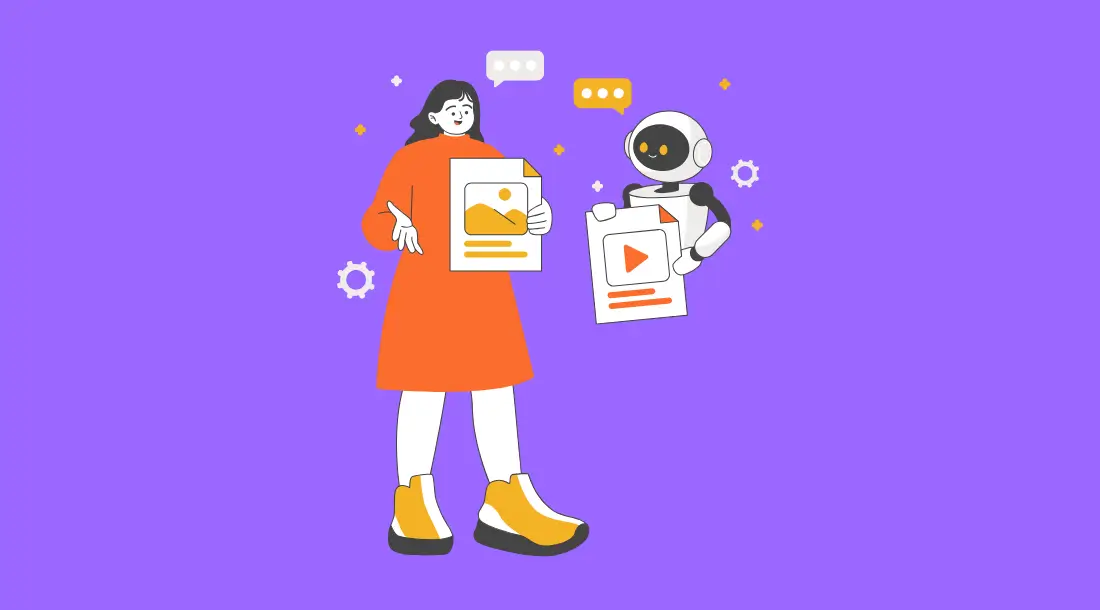
This new dynamic between people and technology is redefining the future of sales. Human-AI collaboration combines the intuition, empathy, and adaptability of sales representatives with the precision, speed, and analytical depth of AI systems. Together, they form a powerful partnership where humans guide strategy while AI handles analysis and execution. The following sections explore how AI for B2B sales is empowering sales professionals, transforming training and performance management, and overcoming resistance to adoption within organizations.
Empowering Sales Representatives
AI for B2B sales has become an invaluable co-pilot for sales representatives. It automates time-consuming tasks, synthesizes complex data, and delivers actionable insights—freeing human sellers to concentrate on what they do best: building trust and closing deals. By integrating AI into everyday workflows, sales professionals gain a digital assistant that enhances both productivity and decision quality.
The empowerment of sales teams through AI for B2B sales can be understood through two main dimensions.
- AI as co-pilot: reducing admin work and enhancing insight: Administrative work consumes a significant portion of a salesperson’s time—data entry, follow-up scheduling, report generation, and CRM updates. AI automates these repetitive tasks, ensuring information is logged accurately and instantly. For instance, AI assistants can automatically record call notes, update deal stages, and even draft follow-up emails based on conversation summaries. Beyond task automation, AI tools analyze vast amounts of customer data to uncover insights that would otherwise remain hidden. Predictive models highlight which leads are most promising, while sentiment analysis tools assess the tone of communications to identify potential risks or opportunities. This combination of automation and intelligence transforms the salesperson’s workflow from reactive management to proactive engagement.
- The new role of data-driven decision-making in daily workflows: In the traditional sales environment, many decisions relied on intuition or past experience. AI for B2B sales introduces a data-driven culture where every decision—from prioritizing leads to pricing negotiations—is guided by analytical evidence. Sales representatives can access dashboards that reveal customer engagement trends, forecast deal success rates, and suggest optimal timing for outreach. Over time, this shift toward evidence-based selling enhances accuracy and performance consistency across teams. Data becomes a trusted advisor, enabling sales professionals to make informed choices that align with both customer needs and business objectives.
Ultimately, AI for B2B sales empowers representatives not by replacing their judgment but by elevating it. With the routine work handled by AI, sales professionals can devote more energy to strategic thinking, relationship building, and consultative selling. The result is a hybrid model of sales excellence—where human creativity and AI precision coexist harmoniously to deliver superior outcomes.
AI-Driven Training and Coaching
Training and coaching have always been essential components of sales excellence, yet traditional programs often suffer from inconsistency, subjectivity, and limited scalability. AI for B2B sales is revolutionizing this domain by introducing personalized, data-driven coaching that continuously adapts to each representative’s strengths, weaknesses, and behavioral patterns. Through conversation intelligence and performance analytics, AI transforms sales training into an ongoing, automated, and highly targeted process.
AI-driven learning systems observe how sales professionals communicate with prospects—whether through calls, emails, or meetings—and evaluate these interactions using machine learning models. They can identify high-performing behaviors, such as effective questioning techniques or persuasive language patterns, and replicate these insights across teams. This level of precision ensures that coaching is not based on generic advice but grounded in real performance data.
Several applications of AI for B2B sales in training and coaching include:
- Conversation intelligence and performance analytics: AI-powered conversation intelligence tools analyze call recordings and meeting transcripts to assess tone, pacing, keyword usage, and customer sentiment. These insights allow managers to pinpoint what distinguishes successful calls from unsuccessful ones. For example, if data shows that top performers spend more time asking discovery questions or use empathetic language, AI can recommend similar behaviors to other representatives. Real-time feedback mechanisms also guide sellers during active conversations, suggesting the next best response or reminding them to address key topics.
- Personalized training based on AI-detected patterns: Instead of generic training modules, AI tailors learning paths to individual sales representatives. By analyzing performance metrics such as win rates, response times, and communication patterns, AI identifies skill gaps and recommends targeted exercises or microlearning sessions. Over time, the system evolves, refining its recommendations as the salesperson improves. Managers also gain visibility into each representative’s learning journey, allowing them to support development more strategically.
AI for B2B sales thus transforms coaching from a static event into a continuous cycle of learning and feedback. It democratizes access to high-quality mentorship by scaling best practices across the organization. With AI monitoring interactions and providing real-time feedback, every representative receives personalized support equivalent to having a dedicated coach. This leads to faster skill development, improved sales outcomes, and a culture of perpetual growth.
Overcoming Adoption Resistance
Despite its many advantages, the integration of AI for B2B sales often encounters resistance from employees and managers alike. Sales professionals may fear that automation will replace their roles or diminish the human touch that defines relationship selling. Others may distrust AI recommendations, viewing them as opaque or overly technical. Overcoming this resistance is critical for organizations that wish to realize the full potential of AI-driven transformation.
The successful adoption of AI for B2B sales depends on a combination of effective change management strategies and the cultivation of organizational trust.
- Change management strategies: Implementing AI requires more than deploying new software—it demands a cultural shift. Leaders must communicate the purpose and benefits of AI clearly, emphasizing that it serves as a partner, not a replacement. Training programs should focus on practical, hands-on experiences that show how AI simplifies daily tasks and improves outcomes. Piloting AI projects within small teams before full-scale rollout can also help build confidence and identify early challenges. Recognizing and rewarding early adopters encourages a positive attitude toward technological innovation.
- Building organizational trust in AI systems: Trust is the cornerstone of AI adoption. Transparency in how AI systems make decisions is essential to earning that trust. When sales representatives understand why a particular lead is prioritized or how a recommendation is generated, they are more likely to follow the AI’s guidance. Organizations should ensure that AI models are explainable, auditable, and aligned with ethical data practices. Providing open channels for feedback and refining systems based on user input further reinforces confidence.
By combining education, transparency, and empowerment, organizations can turn skepticism into enthusiasm. AI for B2B sales should be framed not as a disruptive force but as an enabler that strengthens human capability. Once sales teams recognize that AI amplifies their performance and makes their work more impactful, resistance typically transforms into advocacy.
In the end, successful human-AI collaboration relies on mutual respect between technology and its users. When implemented thoughtfully, AI for B2B sales enhances the human element rather than diminishing it—helping sales professionals achieve higher efficiency, deeper insights, and more meaningful connections with clients. This synergy defines the future of B2B sales: one where people and intelligent systems work together to drive growth, innovation, and long-term customer value.
Measuring ROI and Performance of AI in B2B Sales
Implementing AI for B2B sales is a strategic investment that promises greater efficiency, better forecasting accuracy, and improved customer experiences. However, as with any transformative technology, the true impact of AI must be measured through clear and quantifiable metrics. Organizations often face the challenge of determining whether their AI-driven systems are truly delivering business value or simply generating data without measurable improvement. This makes the task of defining return on investment (ROI) and evaluating performance a critical component of any AI adoption strategy.

Measuring ROI in AI for B2B sales goes beyond tracking revenue growth. It involves assessing the entire ecosystem—how AI enhances sales operations, improves lead quality, accelerates decision-making, and deepens customer relationships. Proper measurement also distinguishes short-term productivity gains from long-term strategic transformation. Through clear key performance indicators (KPIs), organizations can evaluate how AI for B2B sales transforms efficiency, accuracy, and overall profitability.
Defining KPIs
To effectively measure ROI, organizations need a robust framework of KPIs that reflect both operational efficiency and customer success. AI for B2B sales produces a variety of outcomes across lead generation, forecasting, engagement, and retention. Selecting the right KPIs ensures that organizations can track these outcomes objectively, link them to business goals, and continuously optimize performance.
AI for B2B sales performance measurement generally falls into two categories: efficiency metrics that reflect process optimization, and customer metrics that assess experience and value generation. Both categories are essential for understanding how AI impacts not only revenue but also long-term customer relationships.
Efficiency metrics: conversion rates, forecast accuracy, and sales cycle time
Efficiency KPIs measure how effectively AI streamlines workflows and enhances productivity across the sales process.
- Conversion rates are one of the most important metrics, as AI tools for lead scoring and predictive engagement can help identify the prospects most likely to convert. By analyzing historical deal data and behavioral trends, AI models rank leads according to their readiness, improving the likelihood of closing deals with fewer wasted efforts.
- Forecast accuracy is another critical metric that demonstrates AI’s analytical value. Traditional forecasting methods rely heavily on human intuition, often leading to bias or missed signals. AI for B2B sales improves this process by analyzing real-time market and customer data to produce more precise forecasts, reducing errors in revenue predictions and resource planning.
- The sales cycle time measures how long it takes to close a deal from initial contact to final agreement. AI-driven automation—such as chatbots, predictive follow-ups, and workflow streamlining—shortens these cycles by eliminating bottlenecks and ensuring timely responses to prospects. A reduction in sales cycle time signifies greater operational agility and a higher return on sales efforts.
Customer metrics: NPS, retention, and average deal size
Customer-focused KPIs evaluate the impact of AI for B2B sales on satisfaction, loyalty, and deal value.
- Net Promoter Score (NPS) reflects how likely customers are to recommend a business, serving as a proxy for satisfaction and trust. AI contributes to higher NPS by improving personalization, communication quality, and service responsiveness.
- Retention rate is another critical indicator of long-term performance. Predictive models in AI can identify early warning signs of churn, allowing proactive interventions to maintain customer relationships.
- Average deal size provides insight into how AI influences revenue per account. Through better cross-selling, upselling, and customized recommendations, AI for B2B sales often increases deal values while ensuring alignment with client needs. A consistent rise in average deal size suggests that AI insights are not only helping to close more deals but also improving their overall quality.
These KPIs collectively provide a comprehensive picture of performance. Efficiency metrics quantify internal process improvements, while customer metrics assess the external impact of AI adoption. Together, they allow organizations to measure both tangible and intangible benefits—demonstrating how AI for B2B sales enhances profitability, strengthens relationships, and sustains competitive advantage.
Short vs. Long-Term ROI
The ROI of AI for B2B sales evolves in stages. Early benefits often stem from automation and process optimization, while long-term gains emerge as the organization matures in its use of AI-driven insights. Understanding this timeline helps decision-makers set realistic expectations and allocate resources effectively.
In the short term, AI for B2B sales delivers measurable operational improvements by automating repetitive tasks and reducing inefficiencies. Tasks such as data entry, lead qualification, and follow-up scheduling can be handled automatically, saving hours of manual work for sales representatives. Chatbots and virtual assistants improve response times, ensuring that potential leads receive timely information even outside of business hours. These immediate gains translate into increased productivity and lower labor costs, offering a clear and rapid return on investment. Short-term ROI also appears in the form of improved forecast accuracy and higher lead conversion rates. When sales teams can prioritize leads with greater precision, they allocate their efforts more efficiently and achieve faster results.

However, the true power of AI for B2B sales is revealed through its long-term ROI, which goes beyond incremental gains to deliver strategic transformation. Over time, AI becomes deeply embedded in organizational workflows, continuously learning from past performance to improve future outcomes. Predictive and prescriptive analytics evolve into intelligent decision-support systems that not only recommend actions but also anticipate market shifts and customer behaviors. This leads to sustainable competitive advantage, improved revenue predictability, and stronger brand equity.
To illustrate the contrast between short-term and long-term ROI, organizations can analyze performance data from before and after AI implementation:
- Pre-AI performance: Sales teams rely heavily on manual processes and intuition. Forecasts are prone to inaccuracy, sales cycles are lengthy, and customer engagement is inconsistent. Data silos between departments make it difficult to coordinate marketing and sales strategies effectively.
- Post-AI performance: With AI integrated across systems, lead scoring becomes predictive, sales cycles shorten, and forecast accuracy improves. Teams operate from a unified data ecosystem, and customer engagement becomes more personalized and timely. Over time, predictive insights evolve into prescriptive intelligence, guiding strategic decisions such as pricing optimization, market expansion, and retention initiatives.
The distinction between short- and long-term ROI lies not only in the scale of measurable outcomes but also in their sustainability. Short-term ROI captures the efficiency gains from automation, while long-term ROI encompasses the strategic transformation that redefines how the organization competes and grows.
Evaluating ROI in AI for B2B sales thus requires a dual perspective. Companies must celebrate early wins to validate investment but also remain committed to long-term adoption, where the full potential of AI unfolds. The organizations that understand this progression are the ones most likely to achieve lasting impact—turning AI from a tool for productivity into a cornerstone of strategic excellence.
AI Use Cases Across the B2B Sales Funnel
AI for B2B sales has become an essential component of modern selling, fundamentally changing how companies attract, engage, and retain customers. Instead of relying on manual processes and human intuition alone, organizations are now using data-driven intelligence to optimize every stage of the sales funnel—from identifying high-quality leads to closing deals and driving long-term growth. The application of AI across the B2B sales process ensures that decisions are more accurate, interactions are more personalized, and outcomes are more predictable.
Each phase of the B2B sales funnel presents unique challenges: finding the right prospects, nurturing relationships, forecasting future performance, and identifying new opportunities for revenue expansion. AI addresses these challenges by combining automation, analytics, and machine learning, providing real-time insights and recommendations that empower sales teams to work smarter and faster. The following sections examine how AI for B2B sales enhances lead generation, engagement, forecasting, and deal optimization—creating an intelligent, connected sales ecosystem that continuously learns and improves.
Lead Generation and Qualification
The top of the B2B sales funnel is often the most resource-intensive. Generating and qualifying leads requires significant time, manual research, and trial-and-error outreach. AI for B2B sales revolutionizes this process by analyzing large datasets to identify high-quality leads, predict their likelihood to convert, and personalize outreach strategies for each potential customer. By combining predictive analytics, data enrichment, and generative AI, businesses can create a steady flow of qualified leads while reducing wasted effort on low-potential prospects.
AI for B2B sales transforms lead generation and qualification through several key mechanisms:
- Predictive lead scoring models: Traditional lead scoring relies on static rules such as job title, company size, or number of interactions. AI replaces these manual criteria with machine learning models that dynamically evaluate leads based on behavioral and contextual data. These models learn from historical performance—analyzing which prospects converted successfully and which did not—to identify hidden patterns that indicate intent or readiness to buy. For instance, AI might assign a higher score to a prospect who downloads specific whitepapers, attends webinars, and visits high-intent pages multiple times. This continuous learning ensures that the scoring process becomes more accurate over time.
- AI tools for intelligent prospecting: AI systems scan multiple data sources—CRM databases, LinkedIn, company websites, and public records—to identify new prospects that match a company’s ideal customer profile. Unlike manual prospecting, which is time-consuming and prone to human bias, AI prospecting tools can process millions of records to uncover opportunities that humans might overlook. They also assess real-time intent signals, such as keyword searches or social activity, to highlight prospects that are actively seeking relevant solutions.
- Generative AI for personalized outreach: Once qualified leads are identified, generative AI enhances the outreach process by crafting personalized communications at scale. Using natural language processing, AI tools can generate tailored email templates, LinkedIn messages, or marketing content that aligns with each lead’s specific pain points and interests. Instead of sending generic messages, sales teams can deliver highly relevant content that resonates with individual buyers—boosting response rates and engagement.
Through these innovations, AI for B2B sales ensures that lead generation becomes a strategic, data-driven process rather than a manual guessing game. Sales teams spend less time filtering unqualified leads and more time nurturing those with the highest potential for conversion. The outcome is a more efficient top-of-funnel process that improves pipeline quality and drives sustained revenue growth.
Sales Engagement and Communication
After identifying qualified leads, the next stage of the funnel focuses on engagement—building trust and maintaining communication throughout the buyer journey. AI for B2B sales enhances this phase by providing intelligent tools that streamline communication, automate follow-ups, and personalize customer interactions. In a market where buyers expect fast, relevant, and consistent responses, AI helps sales teams maintain engagement at scale without compromising quality or authenticity.
Two major areas define AI’s impact on engagement and communication in B2B sales:
- Conversational AI (chatbots, virtual assistants): Conversational AI has become an indispensable part of modern B2B sales engagement. Chatbots and virtual assistants can handle initial inquiries, schedule meetings, and even qualify leads through dynamic, context-aware conversations. These AI systems use natural language processing to understand buyer intent and provide relevant responses instantly. For example, an AI chatbot on a company’s website can identify returning visitors, greet them by name, and suggest solutions based on previous interactions. Virtual assistants integrated into CRM systems also support internal sales teams by answering queries about product data, pricing, or customer history in real time. This allows human representatives to focus on more strategic and complex interactions, improving both productivity and customer satisfaction.
- Smart email drafting and automated meeting follow-ups: Communication remains a key challenge for sales teams, particularly when managing multiple clients simultaneously. AI for B2B sales streamlines this process by automatically generating email responses, follow-up reminders, and meeting summaries. By analyzing tone, context, and previous exchanges, AI tools can compose emails that sound natural and aligned with each recipient’s preferences. After a meeting, AI systems can summarize key discussion points, track agreed actions, and send follow-up messages automatically. This reduces the administrative burden on sales representatives and ensures no opportunity slips through the cracks.
AI for B2B sales fundamentally changes the way sales teams communicate—turning engagement into a continuous, intelligent dialogue rather than a series of disjointed touchpoints. Every message becomes more relevant, every response faster, and every interaction more meaningful. This not only enhances efficiency but also deepens customer relationships, paving the way for stronger conversion rates and brand loyalty.
Sales Forecasting and Pipeline Management
Sales forecasting is one of the most critical yet challenging aspects of B2B sales management. Inaccurate forecasts can lead to missed revenue targets, poor resource allocation, and weakened strategic planning. AI for B2B sales introduces a level of precision and adaptability that traditional forecasting methods cannot match. By analyzing historical data, real-time activities, and external market signals, AI systems can predict outcomes with exceptional accuracy and provide actionable recommendations for pipeline optimization.
AI for B2B sales enhances forecasting and pipeline management in two significant ways:
- Predictive revenue forecasts: AI-driven forecasting models use machine learning to analyze patterns from past sales cycles, customer engagement, and deal progression. These systems consider variables such as deal velocity, lead engagement, product mix, and regional performance to project future revenue. Unlike manual forecasting—which is prone to bias or inconsistency—AI continuously updates its predictions as new data enters the system. This allows sales leaders to identify potential gaps early and make informed adjustments to meet targets. The ability to forecast accurately also improves collaboration between sales and finance teams, ensuring that growth projections align with business realities.
- AI-based pipeline prioritization and health scoring: Managing a sales pipeline requires constant evaluation of which deals are most likely to close and which may be at risk. AI for B2B sales automates this evaluation through health scoring models that assess each deal’s progress based on engagement data, communication frequency, and historical patterns. For instance, if an account’s activity suddenly decreases or response times lengthen, the AI system can flag it as a potential risk. Conversely, high-engagement accounts receive priority alerts, prompting sales representatives to act quickly and capitalize on momentum. This intelligent prioritization ensures that efforts are focused where they have the greatest impact.
With these capabilities, AI for B2B sales turns forecasting and pipeline management into a science of precision and agility. Sales leaders gain full visibility into their pipeline’s health, allowing them to make data-informed decisions and allocate resources more effectively. The result is improved predictability, higher win rates, and stronger overall sales performance.
Closing Deals and Upselling
The final stage of the B2B sales funnel—closing deals and driving upsells—requires a blend of strategic negotiation, customer insight, and value communication. AI for B2B sales enhances this phase by offering data-backed recommendations, pricing intelligence, and personalized product suggestions that maximize deal value. Rather than relying solely on salesperson intuition, AI systems use predictive analytics to identify the best offers, discounts, and upsell opportunities based on customer history and market trends.
AI for B2B sales supports deal closure and upselling through two primary approaches:
- AI-driven pricing optimization: Determining the right price for each customer is both an art and a science. AI simplifies this by analyzing competitor pricing, purchase history, and market demand to recommend the most strategic pricing structure. For example, AI models can suggest dynamic discounts for accounts with high purchase potential or offer bundled deals to encourage higher order values. This level of pricing intelligence not only improves conversion rates but also protects margins by ensuring offers remain competitive yet profitable.
- Recommendation systems for upselling and cross-selling: Once a deal is closed, AI for B2B sales continues to generate value through intelligent recommendation systems. These systems use machine learning to analyze customer behavior, previous purchases, and usage data to predict complementary products or services the client is likely to need next. For example, if a customer purchases a cloud software subscription, AI might recommend related modules or premium features that align with their business goals. This predictive approach to upselling ensures that additional offers feel natural and relevant rather than intrusive.
By integrating AI into the final stage of the sales funnel, organizations transform their closing process into a data-driven operation that maximizes both revenue and customer satisfaction. AI for B2B sales empowers sales representatives with the insights needed to negotiate confidently, personalize offers, and deliver exceptional value. The result is not only a higher close rate but also stronger long-term customer relationships—turning one-time transactions into recurring partnerships that fuel sustained growth.

In sum, the use cases of AI for B2B sales across the funnel demonstrate how artificial intelligence enhances every step of the buyer journey. From smarter lead generation to intelligent engagement, precise forecasting, and optimized deal closure, AI transforms the sales process into an integrated, adaptive system that continuously learns and evolves—driving measurable business success in an increasingly competitive marketplace.
Generative AI in B2B Sales
Generative AI represents one of the most transformative advancements within the broader landscape of AI for B2B sales. While traditional AI systems focus on prediction, automation, and pattern recognition, generative AI brings creativity and personalization to the forefront. It can create content, adapt tone, and craft communication that feels human, intelligent, and context-aware. In B2B environments—where sales cycles are long, proposals are detailed, and communication quality can determine deal success—generative AI has become a critical enabler of efficiency and engagement.
Generative AI in B2B sales refers to the application of models capable of generating natural language, text, images, or structured content that supports the sales process. It allows businesses to automate content creation, tailor communication for specific audiences, and maintain a consistent brand voice at scale. Whether drafting proposals, writing follow-up emails, or generating insights-based reports, generative AI accelerates the pace of sales operations while enhancing the quality of every touchpoint. The following sections explore how AI for B2B sales leverages generative AI to revolutionize communication, achieve personalization at scale, and navigate ethical challenges in human-machine collaboration.
Transforming Content and Communication
Content and communication are at the heart of every successful B2B sales process. From responding to RFPs to preparing custom proposals, sales teams spend countless hours creating documents that require both technical accuracy and persuasive storytelling. Generative AI in B2B sales addresses this challenge by automating the creation of high-quality, context-specific content. It not only saves time but also ensures consistency across communication channels, allowing sales professionals to focus on relationship-building and strategy.
Generative AI transforms content and communication in several impactful ways:
- Auto-generation of proposals, RFPs, and quotes: Generative AI models can analyze product catalogs, historical deal data, and client requirements to automatically generate detailed proposals and RFP responses. Instead of manually piecing together information from multiple systems, AI composes complete documents with tailored language, pricing, and formatting aligned to the customer’s industry and needs. For instance, AI can take an RFP input, understand its structure, and produce a response that includes relevant case studies, compliance statements, and pricing options. Similarly, AI systems generate quotes with accurate product configurations and cost breakdowns, ensuring precision and speed. This not only accelerates turnaround time but also reduces human error, allowing companies to submit competitive proposals faster than their rivals.
- AI meeting summarization and email drafting: Sales representatives often spend significant time recording meeting notes, crafting follow-ups, and organizing next steps. Generative AI tools equipped with speech recognition and natural language understanding can automatically summarize meeting discussions, extract key action points, and generate follow-up emails immediately after calls. These summaries capture essential insights—such as customer pain points, decision-maker interests, and upcoming deliverables—and integrate them into CRM systems for future reference. Moreover, AI for B2B sales platforms can draft emails in a tone and style appropriate for each recipient, whether it’s a formal business proposal or a casual check-in. This ensures consistency and professionalism while freeing up salespeople to engage with more prospects.
Generative AI, when embedded into AI for B2B sales ecosystems, thus acts as a creative assistant—streamlining communication, maintaining brand voice, and eliminating delays in document preparation. The outcome is a sales organization that communicates faster, more effectively, and with greater personalization. By reducing manual content generation, businesses can increase productivity while enhancing the overall customer experience through timely, relevant, and high-quality communication.
Personalization at Scale
Personalization has become a defining factor in modern B2B sales success. Buyers expect communications that reflect their industry context, role, and business challenges rather than generic sales pitches. However, delivering such personalization at scale has traditionally been a challenge due to the complexity of managing multiple accounts, personas, and communication styles. Generative AI in B2B sales addresses this challenge by enabling hyper-personalization—automatically creating content that adapts to each prospect’s needs while maintaining consistency and brand integrity.
AI for B2B sales leverages generative technologies to create scalable personalization through the following key applications:
- Tailored messaging by industry, persona, or role: Generative AI can analyze customer data, industry trends, and engagement history to craft messages that align precisely with a recipient’s role and priorities. For instance, an AI system can automatically generate separate email versions for a CFO and a CTO at the same company—emphasizing ROI and financial predictability for the former, and system integration or scalability for the latter. Similarly, AI-driven copy can adapt tone, style, and vocabulary to suit the recipient’s communication preferences. This ensures that every message resonates more deeply with the decision-maker’s mindset, increasing the likelihood of engagement and conversion.
- Dynamic content for account-based marketing: Account-Based Marketing (ABM) thrives on individualized experiences, and generative AI makes this personalization feasible at scale. By analyzing data such as company size, market position, and past interactions, AI for B2B sales systems can automatically generate customized marketing materials—such as landing pages, emails, and case studies—that speak directly to each account’s unique challenges. For example, if a prospect operates in the healthcare industry, the system can generate content that highlights compliance, security, and patient data management benefits. In contrast, for a manufacturing client, it might emphasize automation, efficiency, and production optimization. The content updates dynamically as the account progresses through different stages of the buying cycle, ensuring ongoing relevance.
Generative AI’s ability to scale personalization transforms how companies approach customer engagement. Instead of creating one-size-fits-all campaigns, businesses can deliver one-to-one communication that feels human and authentic, even when managed by automated systems. This not only strengthens customer relationships but also improves engagement metrics such as open rates, click-throughs, and meeting conversions. In essence, AI for B2B sales enables organizations to blend the precision of data-driven targeting with the empathy of personalized storytelling—something that was once impossible at enterprise scale.
Ethical and Operational Considerations
As AI for B2B sales becomes more integrated into content generation and customer communication, ethical and operational considerations become increasingly important. Generative AI introduces new opportunities for efficiency but also new responsibilities. Businesses must ensure that automation does not compromise authenticity, privacy, or trust. Ethical deployment is essential not only for compliance but also for maintaining the integrity of customer relationships that form the foundation of B2B success.
The adoption of generative AI in B2B sales brings forward two primary challenges and solutions:
- Balancing automation with authenticity: While generative AI can produce high-quality, personalized content, there is a risk that excessive automation can make communication feel impersonal or synthetic. Buyers can often detect when messages lack genuine human touch, leading to reduced trust. To balance this, organizations using AI for B2B sales should maintain a “human-in-the-loop” approach, where AI drafts content and humans review or refine it before final delivery. This hybrid model combines the efficiency of automation with the empathy and judgment of human communication. Additionally, companies should clearly define the boundaries of AI involvement—ensuring that AI supports communication rather than replaces it entirely.
- Maintaining transparency in AI-assisted communications: Transparency builds trust between sellers and buyers. When AI systems generate content, customers should not feel misled or manipulated. Businesses can maintain transparency by clearly disclosing when automated systems are used, particularly in initial interactions or support communications. It’s also important to ensure that AI-driven messages comply with data privacy regulations such as GDPR or CCPA. This includes responsibly sourcing data, respecting consent, and ensuring that AI models do not perpetuate bias or misinformation. Regular audits and governance frameworks help ensure that AI systems operate ethically and align with brand values.
Addressing these ethical and operational considerations ensures that AI for B2B sales remains a force for enhancement rather than disruption. When implemented responsibly, generative AI strengthens trust by improving communication quality and speed without eroding human authenticity. The organizations that find this balance will not only gain operational efficiency but also foster long-term loyalty and credibility in their markets.
Generative AI marks a new era for AI for B2B sales—an era where automation and creativity coexist. It enables sales teams to produce more content, more accurately, and more personally than ever before while maintaining the empathy and integrity that define successful B2B relationships. By embracing both its potential and its responsibilities, businesses can leverage generative AI as a transformative ally in driving growth, efficiency, and customer engagement.
Case Studies — Real-World Success Stories
AI for B2B sales is no longer a theoretical concept—it is a proven driver of measurable business outcomes across industries. From global enterprises to fast-scaling technology companies, organizations that have integrated AI into their sales ecosystems are reporting remarkable improvements in efficiency, forecasting accuracy, and customer engagement. Real-world case studies demonstrate how AI for B2B sales transforms traditional operations into intelligent, adaptive systems that accelerate growth while improving decision-making.
Salesforce – Predictive Insights for Global Enterprises
Salesforce is one of the world’s most influential technology companies in the realm of CRM and enterprise sales management. Its platform powers thousands of global organizations, providing tools for sales, marketing, and customer success.

By integrating AI into its ecosystem through Salesforce Einstein, the company has redefined how businesses use data to sell smarter, faster, and with greater precision.
Background and Challenges
Before the integration of AI, Salesforce customers—particularly large enterprises—faced several challenges typical of complex B2B sales environments. While traditional CRM systems were highly effective for data storage and workflow management, they lacked the ability to extract deep insights or predict future outcomes.
The main challenges included:
- Fragmented data: Enterprise sales teams often operated across multiple regions and channels, collecting data from marketing, sales, and support systems that were not fully connected. This lack of integration resulted in information silos, making it difficult to build a unified view of customer behavior.
- Manual forecasting: Revenue projections were typically based on human judgment or historical trends, leaving room for bias and inaccuracy. Without real-time insights, sales leaders struggled to adjust to changing market conditions or identify potential risks early in the pipeline.
- Inconsistent pipeline visibility: Managing large global sales pipelines manually made it challenging to determine which deals were at risk or which leads had the highest probability of conversion. This inconsistency reduced operational efficiency and hindered proactive decision-making.
These pain points highlighted a growing need for a smarter, data-driven approach. The emergence of AI for B2B sales provided Salesforce with the opportunity to embed predictive intelligence directly into its CRM, creating an environment where every sales interaction could be informed by data-driven foresight.
AI-Powered Features
Salesforce Einstein represents the company’s flagship initiative in AI for B2B sales. It integrates machine learning and advanced analytics into the core CRM environment, enabling sales teams to gain predictive insights without leaving their daily workflows.
Key AI-powered features include:
- Machine learning integration into CRM workflows: Einstein continuously analyzes data within the CRM—emails, activities, account histories, and past transactions—to identify correlations and patterns that humans might overlook. This analysis happens automatically, allowing users to make better decisions without requiring data science expertise.
- Predictive lead and opportunity scoring: Using historical data, Einstein assigns predictive scores to leads and opportunities based on their likelihood to convert or close. Factors such as engagement history, deal stage progression, and response time are weighted by AI algorithms. This helps sales representatives prioritize high-value leads and focus on deals with the greatest potential for success.
- AI-powered forecasting dashboards: One of Einstein’s most impactful capabilities is its predictive forecasting tool. Instead of relying on static reports, sales managers can view real-time dashboards that display expected revenue, deal health, and probability-based forecasts. The system automatically adjusts predictions as new data enters the CRM, improving visibility and responsiveness.
These features collectively enhance the intelligence layer of Salesforce, turning raw data into actionable insights. Einstein essentially transforms the CRM from a record-keeping tool into a strategic advisor—one that continuously learns from outcomes and optimizes recommendations for future actions.
Results and Impact
The introduction of Einstein has significantly elevated Salesforce’s role in the enterprise sales landscape. By embedding AI into its CRM, Salesforce has empowered global organizations to achieve measurable improvements in forecasting, productivity, and revenue management.
Notable impacts include:
- Improved forecast accuracy and revenue predictability: Companies using Salesforce Einstein report higher confidence in their forecasts. Predictive models reduce uncertainty by identifying early warning signs of deal delays or cancellations. This has enabled leadership teams to plan more effectively and allocate resources strategically.
- Enhanced sales rep efficiency through task prioritization: Sales representatives no longer need to rely solely on intuition. Einstein automatically highlights the most promising leads and suggests next actions based on data-driven recommendations. This automation allows teams to spend more time engaging with customers and less time managing administrative tasks.
- Shorter deal cycles through AI-driven insights: By identifying decision-maker intent and engagement patterns earlier in the process, Einstein helps sales teams accelerate deal progression. AI-driven alerts notify representatives when prospects are most likely to respond, enabling timely and personalized outreach.
These improvements translate into faster sales velocity and higher conversion rates, proving that AI for B2B sales does more than optimize efficiency—it transforms how organizations understand and interact with customers.
Key Takeaways
The Salesforce case provides valuable insights into the scalability and effectiveness of AI for B2B sales in complex enterprise environments.
- Scalability of embedded AI: Salesforce Einstein demonstrates that AI can be seamlessly integrated into existing systems without disrupting established workflows. Its adaptability across industries and business sizes highlights the universal value of AI in enhancing CRM functionality.
- Predictive analytics as the foundation of enterprise sales intelligence: The success of Salesforce Einstein underscores the critical role of predictive analytics in modern sales strategy. By transforming historical data into forward-looking insights, Salesforce has empowered companies to move from reactive selling to proactive engagement.
Salesforce’s use of AI for B2B sales showcases how predictive intelligence can elevate sales management from operational efficiency to strategic foresight. The company’s model exemplifies the power of embedding AI directly within the tools sales teams already use—turning data into intelligence and intelligence into competitive advantage.
HubSpot – Personalization for SMB Sales Growth
HubSpot, founded in 2006, has become a cornerstone in the marketing and sales automation landscape, serving hundreds of thousands of SMBs worldwide. Its integrated CRM, marketing, and service tools help businesses attract, engage, and delight customers in a unified ecosystem. Recognizing that small sales teams often face the same complexity of managing leads and pipelines as larger enterprises—but with fewer resources—HubSpot invested heavily in AI to bridge this capability gap.
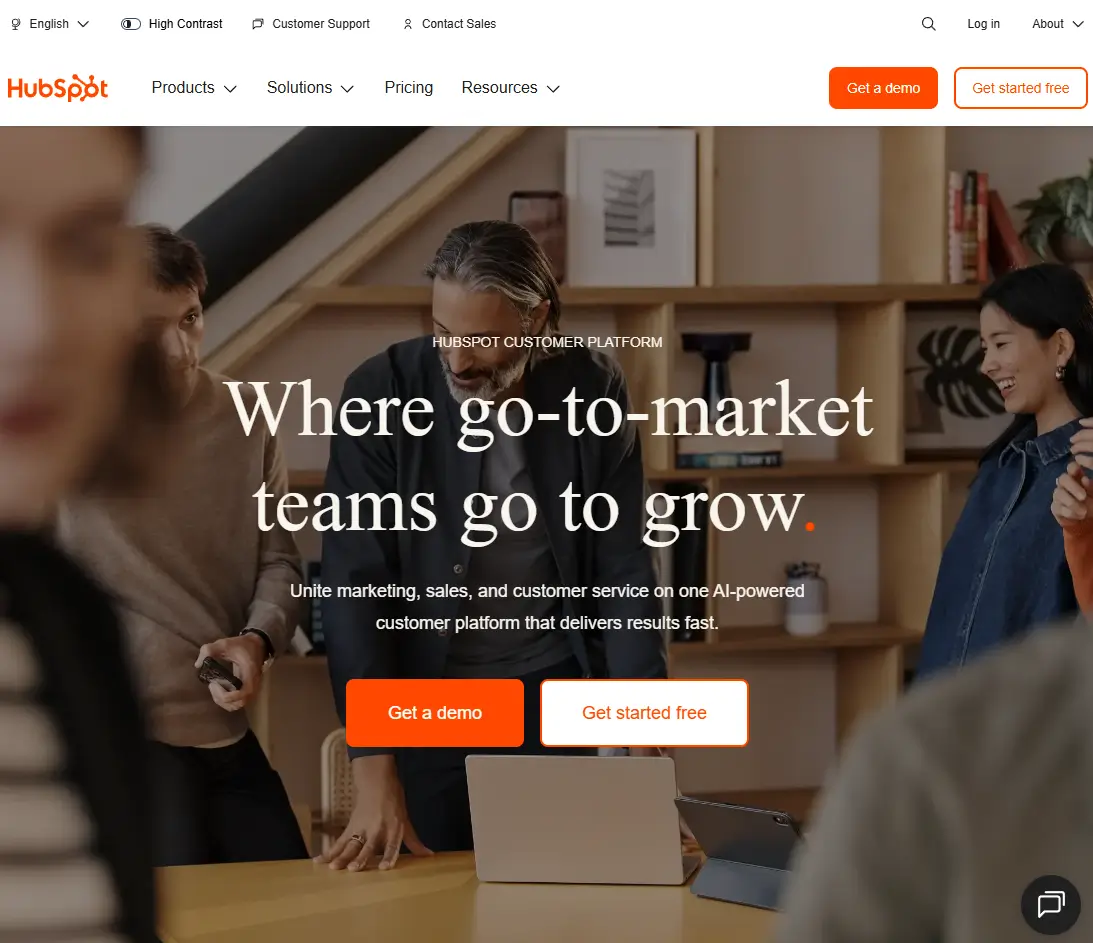
By embedding AI into its product suite, HubSpot enables smaller businesses to harness the power of automation and predictive intelligence without needing dedicated data scientists or large budgets. This case illustrates how AI for B2B sales can empower smaller teams to execute enterprise-level strategies through smarter technology, efficient workflows, and contextual personalization.
Background and Challenges
Before integrating AI deeply into its ecosystem, HubSpot’s user base—primarily small and mid-sized companies—faced several challenges that limited their ability to scale and compete with larger competitors.
- Limited team capacity: SMB sales teams are typically small, juggling multiple roles that span prospecting, outreach, follow-ups, and administrative tasks. The workload left little time for strategic planning or data analysis.
- Lack of data science resources: Unlike enterprises that could hire analysts or invest in AI platforms, SMBs needed automation tools that could deliver AI benefits out-of-the-box, without requiring specialized setup or training.
- Demand for affordable automation: Budget constraints made it difficult for smaller companies to access advanced AI solutions. They needed tools that were cost-effective, easy to deploy, and capable of delivering measurable results quickly.
HubSpot identified these barriers as opportunities to innovate. By integrating AI into its CRM and Sales Hub, the company set out to create an ecosystem where any business—regardless of size or technical sophistication—could benefit from intelligent sales capabilities.
Through its commitment to simplicity and accessibility, HubSpot made AI for B2B sales not only functional but also intuitive, empowering smaller teams to execute data-driven sales strategies with minimal friction.
AI Implementation – HubSpot’s AI Ecosystem
HubSpot’s approach to AI centers on embedding intelligence directly into its existing tools, ensuring that users interact with AI seamlessly within their daily workflows. This implementation covers several critical functions across the sales process: email optimization, predictive lead scoring, and generative automation through its conversational assistant, ChatSpot.
- AI for email subject-line optimization and smart content recommendations: HubSpot uses machine learning algorithms to analyze large datasets of email campaigns, identifying patterns that drive higher open and click-through rates. The AI system suggests optimized subject lines based on tone, length, and engagement trends, helping users craft more effective outreach. It also recommends dynamic content for different audience segments, ensuring that each recipient receives messages tailored to their industry, location, or engagement history. For SMBs with limited marketing capacity, this level of personalization was previously out of reach.
- Predictive lead scoring in HubSpot Sales Hub: HubSpot’s predictive lead scoring model uses AI to evaluate and rank leads based on historical conversion data. It analyzes factors such as email engagement, website visits, and demographic information to predict which leads are most likely to convert into customers. This allows sales teams to prioritize their outreach intelligently rather than relying on gut instinct. The result is a more efficient sales funnel, where representatives focus their energy on high-probability opportunities.
- ChatSpot – HubSpot’s generative AI assistant: Perhaps the most revolutionary feature in HubSpot’s AI suite, ChatSpot brings generative AI directly into the CRM environment. Built on top of OpenAI’s language models, ChatSpot allows users to perform complex CRM tasks using natural language commands. Sales representatives can ask ChatSpot to “show my top deals closing this month” or “generate a report on pipeline health,” and the assistant will instantly provide insights or generate summaries. ChatSpot can also automate administrative work such as data entry, meeting note generation, and follow-up email drafting—tasks that typically consume significant time for small teams.
Together, these AI-driven tools demonstrate HubSpot’s commitment to making AI for B2B sales accessible and actionable. By integrating intelligence into familiar workflows, HubSpot ensures that users benefit from automation and insights without needing to understand the underlying complexity of AI technology.
Results and Impact
The integration of AI features has produced measurable outcomes for HubSpot’s user base, validating the company’s mission to democratize AI for B2B sales. Across industries, SMBs using HubSpot’s AI tools report significant improvements in efficiency, personalization, and conversion rates.
- Enterprise-level personalization for SMBs: AI tools like predictive scoring and content recommendation enable small businesses to deliver the kind of individualized experiences previously reserved for large enterprises with dedicated analytics teams. Personalized messaging and dynamic campaigns have led to stronger engagement and higher customer satisfaction.
- Higher conversion rates through AI-driven segmentation: By automatically categorizing leads based on behavior and likelihood to purchase, HubSpot’s AI helps sales teams focus on the right prospects. This precision in targeting has improved conversion rates while reducing wasted outreach efforts.
- Reduced manual workload and administrative overhead: ChatSpot’s automation capabilities have freed sales representatives from repetitive data-entry and reporting tasks. This time savings allows teams to devote more attention to relationship-building and deal strategy, resulting in faster response times and higher productivity.
In aggregate, these results show that AI for B2B sales does not need to be complicated to deliver value. Through intelligent design and user-friendly interfaces, HubSpot has proven that advanced AI can deliver measurable growth for organizations of any size.
Key Takeaways
The HubSpot case highlights the growing importance of accessibility and usability in the success of AI for B2B sales. While many enterprise solutions focus on scale and sophistication, HubSpot has demonstrated that practical implementation and ease of use are equally crucial for driving adoption—especially among SMBs.
Key lessons from HubSpot’s success include:
- Democratizing AI drives adoption and loyalty: By making AI features intuitive, affordable, and embedded within everyday workflows, HubSpot empowers small businesses to compete effectively with larger enterprises. This accessibility builds long-term loyalty and positions HubSpot as a trusted partner for growth.
- Usability and simplicity can outweigh complexity: AI for B2B sales achieves its greatest impact when it helps users make better decisions without requiring technical expertise. HubSpot’s focus on user experience ensures that the power of AI is felt in practical, daily operations rather than confined to data science teams.
In essence, HubSpot’s approach proves that the future of AI for B2B sales is not only about technological sophistication but also about inclusivity. By lowering barriers to entry, HubSpot enables businesses of all sizes to leverage AI as a strategic growth engine—turning intelligence into opportunity and automation into empowerment.
IBM Watson – Cognitive Sales Assistance
IBM Watson represents one of the most advanced and influential examples of cognitive AI in enterprise environments. Built on decades of IBM research in machine learning, natural language processing (NLP), and deep reasoning, Watson has evolved from a groundbreaking AI experiment into a suite of commercial tools used across industries—from healthcare and finance to retail and enterprise sales.

In the context of AI for B2B sales, IBM Watson serves as a cognitive assistant that enables organizations to uncover actionable insights from massive volumes of data. Its ability to interpret natural language, understand context, and learn from interactions allows sales teams to engage with customers more intelligently, anticipate needs, and deliver tailored solutions. Through tools like the Watson Sales Advisor, IBM has redefined how data can be transformed into a strategic asset for global sales teams.
Background and Challenges
Before deploying Watson’s capabilities in sales environments, IBM faced a fundamental challenge shared by nearly all large enterprises: the overwhelming amount of unstructured data. In the world of B2B sales, data originates from diverse sources—emails, proposals, CRM notes, meeting transcripts, and internal reports. While this data is rich with potential insights, much of it remains untapped due to its unstructured nature.
IBM’s strategy with Watson was to address this growing problem head-on. The company recognized that traditional analytics tools were insufficient for interpreting the nuances of human communication or reasoning through complex sales scenarios. Sales teams spent hours manually searching through records, proposals, and documents to find relevant information, often missing critical details that could influence deal success.
The core challenge was clear: enterprises were drowning in data but starving for insight. To stay competitive, sales professionals needed a system that could understand natural language, process information contextually, and deliver timely recommendations. IBM saw an opportunity to apply Watson’s cognitive intelligence—originally designed for problem-solving in healthcare and research—to revolutionize how enterprise sales teams manage and act on information.
Through this strategic pivot, IBM positioned Watson not merely as an analytics engine but as a true cognitive partner for sales—capable of interpreting data the way humans think, reason, and make decisions.
AI Solution Overview
The introduction of Watson Sales Advisor marked a turning point in IBM’s application of AI for B2B sales. Unlike traditional rule-based systems, Watson Sales Advisor uses natural language processing, machine learning, and knowledge graph reasoning to interpret the intent behind customer interactions and provide sales representatives with intelligent, context-aware recommendations.
Key features of the solution include:
- Watson Sales Advisor and NLP-driven insights: The Sales Advisor harnesses Watson’s NLP capabilities to analyze conversations, emails, and CRM records. It interprets both structured and unstructured information—understanding sentiment, urgency, and customer intent—to suggest next-best actions. For example, if a customer inquiry contains signals of readiness to purchase, Watson can alert the sales representative and recommend relevant materials or follow-up steps. This transforms communication data into real-time sales intelligence, enabling proactive engagement.
- Integration with Salesforce and SAP systems: Recognizing that most enterprises already operate within complex CRM ecosystems, IBM designed Watson to integrate seamlessly with platforms like Salesforce and SAP. This ensures that AI-driven insights appear within existing workflows, rather than requiring teams to learn new tools. The integration provides contextual recommendations—such as which accounts to prioritize, what content to share, or when to initiate contact—based on real-time behavioral data. By combining AI for B2B sales with the power of existing enterprise systems, Watson enhances productivity without disrupting familiar environments.
- Cognitive search and knowledge discovery: One of Watson’s most advanced capabilities is its cognitive search engine, which can identify opportunities hidden within vast internal knowledge bases. By scanning product documentation, proposal archives, and historical project data, Watson uncovers patterns that human analysts might miss. For instance, it can identify similar past deals or propose solutions that proved effective for comparable clients. This functionality ensures that institutional knowledge is not lost but continually leveraged to strengthen sales strategy.
Together, these features make Watson an intelligent partner that continuously learns from data and user interactions. It transforms sales operations from reactive information retrieval into proactive, cognitive engagement—redefining what it means to use AI for B2B sales in a complex, data-intensive environment.
Results and Impact
The impact of IBM Watson on B2B sales has been profound, both within IBM’s own organization and across its client base. By embedding cognitive AI into sales workflows, teams have achieved significant improvements in efficiency, win rates, and customer responsiveness.
- Improved opportunity qualification and win rates: With Watson’s predictive and cognitive capabilities, sales teams can identify high-potential opportunities earlier in the pipeline. By analyzing customer intent and historical deal success patterns, Watson helps prioritize accounts with the highest probability of conversion. This improved qualification process has led to measurable increases in win rates across several IBM clients.
- Reduced information retrieval time: Sales representatives spend considerably less time searching for data or assembling proposals. Instead of manually combing through databases, they can rely on Watson’s cognitive search and recommendation engine to surface the most relevant information instantly. This efficiency not only accelerates sales cycles but also enhances the quality of interactions with customers.
- Faster response times and more relevant content: With AI-driven insights, IBM and its clients have been able to respond to customer inquiries faster and with greater precision. Watson’s ability to tailor recommendations ensures that responses are not only timely but contextually relevant, improving the overall customer experience. This capability is especially critical in enterprise sales, where responsiveness and relevance often determine the difference between winning and losing a deal.
Overall, IBM’s integration of cognitive AI has redefined the role of technology in enterprise sales. By shifting from basic automation to intelligent reasoning, Watson has enabled organizations to elevate their sales operations from transactional efficiency to strategic intelligence.
Key Takeaways
IBM’s deployment of Watson within the sales domain offers valuable lessons on how cognitive AI can enhance complex B2B sales processes.
- Cognitive AI enables human-like understanding of sales intent: Unlike conventional analytics tools that rely on static datasets, cognitive AI understands the context, emotion, and intent behind communication. This allows sales teams to respond more intuitively to customer needs and anticipate future actions.
- The fusion of AI reasoning and domain expertise enhances selling performance: The true power of AI for B2B sales lies in its ability to complement human expertise with data-driven reasoning. Watson’s success demonstrates that when AI systems are aligned with real-world sales knowledge, they can amplify human decision-making and unlock new levels of performance.
IBM Watson’s application in B2B sales illustrates the future direction of enterprise selling—where machines do not simply automate, but think alongside humans. By combining natural language understanding, reasoning capabilities, and data integration, IBM has shown how cognitive AI can turn information overload into strategic clarity, empowering organizations to sell smarter in an increasingly complex world.
Oracle – Intelligent Deal Forecasting
Oracle’s long-standing expertise in cloud technology, ERP, and CRM positioned it uniquely to lead innovation in AI for B2B sales. The company’s global customer base includes large organizations that rely on accurate forecasting to make strategic business decisions, allocate resources, and maintain investor confidence.
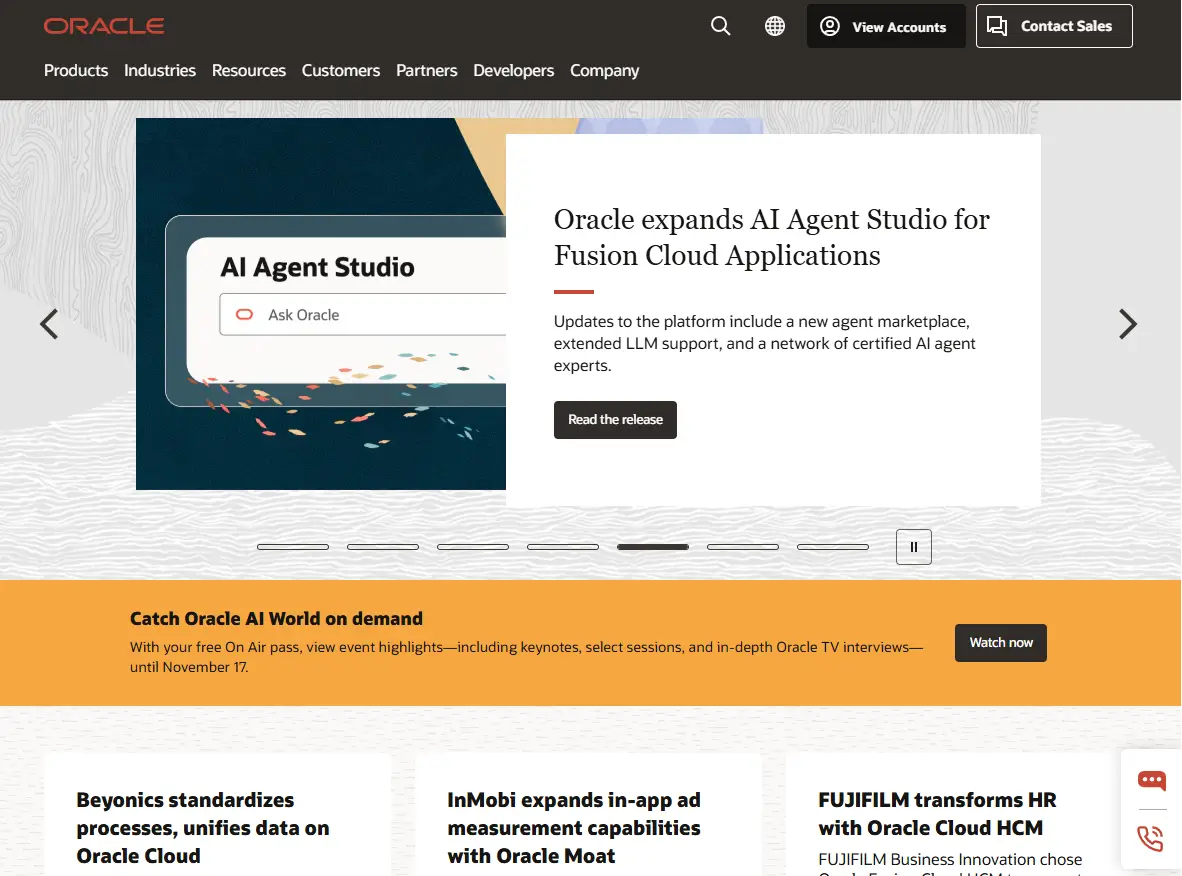
Recognizing that forecasting accuracy is both a competitive differentiator and a financial necessity, Oracle leveraged its cloud infrastructure and AI research to develop intelligent forecasting tools within Oracle Fusion Sales and CX Cloud. These solutions combine machine learning, predictive analytics, and prescriptive recommendations to help sales leaders not only see where their business stands but also understand what actions to take next.
Background and Challenges
Before adopting AI-driven forecasting, Oracle and its clients faced widespread challenges typical of large, distributed sales organizations. Forecasting processes were largely manual, relying on static spreadsheets and human intuition. These legacy systems created inefficiencies and inaccuracies that often resulted in missed targets, misaligned resources, and last-minute revenue surprises.
Several key challenges defined Oracle’s transformation journey:
- Legacy forecasting systems: Traditional forecasting tools, built around spreadsheets and static models, struggled to keep pace with modern business complexity. Data was often outdated by the time it reached decision-makers, leading to reactive rather than proactive management.
- Accuracy limitations: Oracle’s global sales teams needed a system that could adapt dynamically to shifting market conditions, customer behavior, and deal progression. Manual forecasting methods lacked the analytical depth to detect early signs of pipeline risk or opportunity changes.
- Limited real-time visibility: Without AI integration, forecasts were based on periodic updates and subjective inputs from sales representatives. This created information silos, delayed insights, and hindered alignment between sales and finance departments.
Oracle understood that for large-scale enterprises, accurate forecasting is not merely a reporting function—it’s a strategic capability. AI for B2B sales offered a pathway to eliminate human bias, improve transparency, and transform forecasting into a continuous, data-driven process.
AI-Driven Forecasting Approach
To address these challenges, Oracle introduced a robust AI forecasting framework within its Fusion Sales and CX Cloud applications. This approach applied machine learning and predictive intelligence directly to the sales pipeline, automating the process of data analysis, forecasting, and risk identification.
The core elements of Oracle’s AI for B2B sales forecasting system include:
- Integration of AI within Oracle Fusion Sales and CX Cloud: By embedding AI into its existing ecosystem, Oracle ensured that forecasting insights were available directly within the tools sales teams already used. The system continuously processes live pipeline data, customer interactions, and transaction histories to generate accurate revenue projections. Unlike static reports, forecasts are automatically refreshed as new data flows into the system.
- Machine learning models trained on historical pipeline data: Oracle’s AI models are trained using years of historical sales data, allowing them to identify patterns and correlations between deal characteristics, sales behaviors, and closing outcomes. The algorithms weigh multiple factors—including deal stage duration, communication frequency, and rep performance—to calculate probability scores for each opportunity. These probability-weighted forecasts deliver a more accurate representation of potential revenue and help management anticipate both upside opportunities and potential shortfalls.
- AI-driven recommendations for corrective actions: One of the most powerful aspects of Oracle’s system is its prescriptive intelligence. When deals show signs of stagnation, AI automatically suggests corrective actions such as re-engagement with key stakeholders, pricing adjustments, or follow-up communications. These recommendations are context-aware and personalized based on historical success rates. For example, if the AI model detects that similar deals in the past were won after specific types of customer interactions, it recommends replicating those actions.
By embedding these features into its cloud infrastructure, Oracle effectively turned forecasting into a real-time strategic process. The system not only predicts outcomes but also advises on how to influence them—moving beyond descriptive analytics to true decision intelligence.
Results and Impact
Oracle’s application of AI for B2B sales forecasting has delivered substantial benefits both within its organization and for its global enterprise clients. By leveraging automation, predictive analytics, and prescriptive insights, companies using Oracle’s AI forecasting tools have reported measurable improvements in sales performance, efficiency, and strategic alignment.
The results can be summarized as follows:
- Enhanced forecast accuracy and reliability: Enterprises using Oracle’s AI-driven forecasting report significant improvements in accuracy, reducing variance between projected and actual results. The AI models adjust dynamically as conditions change, eliminating the guesswork and bias often inherent in manual forecasting. This level of reliability gives leadership teams greater confidence in their decision-making.
- Proactive pipeline management and reduced end-of-quarter surprises: One of the most tangible impacts of Oracle’s AI for B2B sales is its ability to help organizations detect potential issues before they escalate. By providing early alerts on stalled deals or declining engagement, the system enables proactive interventions. As a result, sales managers can reallocate resources and address bottlenecks earlier in the cycle, avoiding last-minute revenue gaps.
- Improved collaboration between sales and finance: Oracle’s unified AI platform bridges the gap between sales and finance teams, ensuring both departments operate from the same set of real-time insights. Forecasting dashboards accessible to all stakeholders foster transparency and alignment, reducing friction and improving cross-functional planning.
These outcomes underscore how AI for B2B sales transforms forecasting from a static administrative process into a strategic advantage. By enabling organizations to anticipate outcomes with precision and take corrective actions in real time, Oracle has proven that AI can fundamentally change how enterprises manage growth and performance.
Key Takeaways
Oracle’s intelligent forecasting case illustrates one of the most practical and high-impact uses of AI for B2B sales. It demonstrates how artificial intelligence can transform a traditionally manual, error-prone process into an intelligent, automated system that supports data-driven leadership.
- Forecasting is one of the most direct and valuable applications of AI in B2B sales: Unlike many AI tools that focus on incremental efficiency, forecasting directly affects strategic decisions, resource allocation, and revenue predictability. Oracle’s success confirms that AI-powered forecasting delivers tangible financial benefits by improving accuracy and accountability.
- AI-enhanced decision support is essential for large organizations: In enterprises managing complex sales pipelines, the ability to combine human judgment with AI insights is critical. Oracle’s model demonstrates how intelligent decision-support systems can guide executives, managers, and sales teams toward smarter, more confident actions.
Ultimately, Oracle’s integration of AI for B2B sales forecasting represents a pivotal step in the evolution of enterprise sales management. It transforms forecasting from a backward-looking exercise into a forward-looking, adaptive process—enabling organizations to plan with precision, act with agility, and lead with data-driven intelligence.
SAP – AI for Complex B2B Supply Sales
SAP has built its global reputation on developing intelligent enterprise systems that help organizations operate efficiently across complex networks. Its customers include multinational manufacturers, logistics providers, and suppliers that rely on real-time coordination to deliver high-value goods and services. In this environment, B2B sales are not just about closing deals—they’re about managing an intricate ecosystem of data, inventory, and relationships.
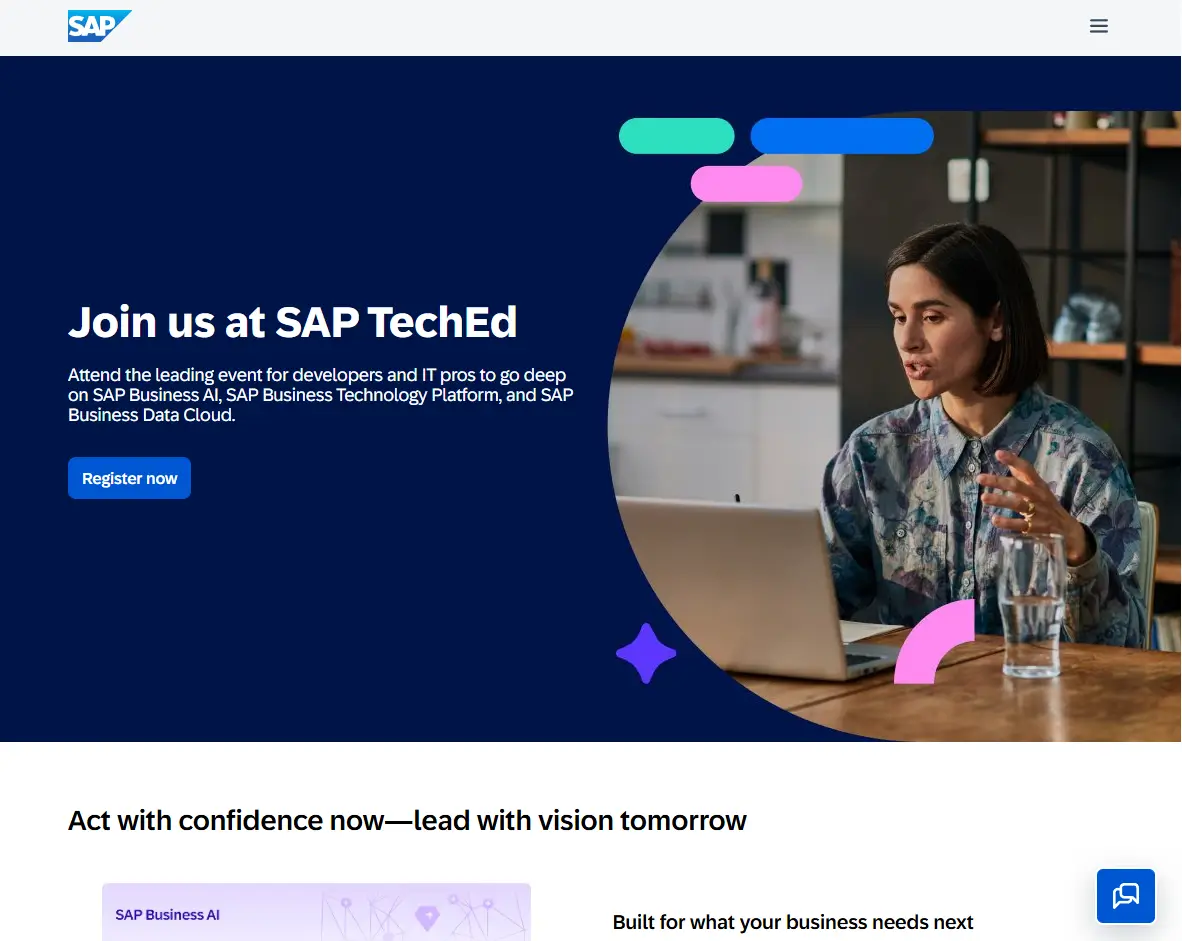
Recognizing the inefficiencies of traditional sales methods in such complex contexts, SAP began embedding AI capabilities into its Sales Cloud to bring agility and intelligence to B2B supply sales. The company’s vision for AI for B2B sales centers on creating seamless collaboration between sales and operations, enabling smarter decisions, faster responses, and greater accuracy throughout the sales cycle.
Background and Challenges
Before implementing AI solutions, SAP and its clients faced several recurring challenges that stemmed from the inherent complexity of B2B supply sales. Unlike simple transactional sales models, supply-oriented selling involves multiple stakeholders, customized pricing, and extended approval processes that span departments and even continents.
Some of the major challenges included:
- Multi-layered transactions: B2B supply deals often involve multiple touchpoints, including procurement, production, and logistics teams. Each stakeholder manages different data systems, making it difficult for sales representatives to maintain visibility and coordinate efforts.
- Dynamic pricing complexity: Prices in supply-driven industries fluctuate based on material costs, production capacity, and delivery schedules. Without AI, managing and optimizing pricing in real time was nearly impossible, often leading to inconsistencies or delays in quote approvals.
- Lengthy approval cycles: High-value deals required numerous internal reviews for pricing validation, inventory availability, and compliance. Manual coordination across departments extended the quote-to-cash cycle, reducing overall sales velocity.
- Disconnected forecasting systems: Traditional forecasting relied heavily on static reports and past performance data, offering limited insight into future demand influenced by supply chain fluctuations or macroeconomic factors.
SAP recognized that overcoming these barriers required more than automation—it required intelligence. The goal was to infuse AI for B2B sales into the fabric of its systems so that decision-making could be informed by real-time data, predictive analytics, and process automation.
AI-Enabled Enhancements
SAP’s integration of AI into its Sales Cloud and ERP solutions represents one of the most sophisticated examples of applying artificial intelligence to large-scale, supply-dependent B2B environments. The company’s enhancements focus on empowering sales teams with predictive insights, dynamic pricing capabilities, and automated workflows that bridge traditionally disconnected departments.
Key AI-enabled enhancements include:
- AI-driven opportunity scoring and dynamic pricing optimization: Within the SAP Sales Cloud, AI algorithms analyze vast datasets from historical deals, customer behavior, and market conditions to score sales opportunities based on their likelihood to close. Simultaneously, dynamic pricing engines use real-time input from supply chain systems—such as material availability, production costs, and delivery timelines—to suggest optimal pricing structures. This ensures both competitiveness and profitability, allowing sales representatives to deliver accurate quotes that reflect current market realities.
- Intelligent automation of quote-to-cash workflows: One of the most transformative elements of SAP’s AI for B2B sales approach is its automation of the quote-to-cash process. By using AI to verify data, validate pricing, and trigger approvals, SAP eliminates redundant steps that previously required manual intervention. For example, when a deal reaches a certain stage, AI can automatically generate quotes, route them for approval, and notify relevant stakeholders. This automation dramatically reduces cycle times and minimizes human errors in contract processing.
- Predictive analytics for supply chain-driven forecasting: AI models within SAP Sales Cloud integrate directly with SAP’s ERP and supply chain management modules, enabling predictive forecasting based on real-time operational data. These models consider variables such as order backlogs, supplier performance, and market demand signals to forecast future sales more accurately. The predictive analytics layer helps organizations anticipate disruptions and adapt sales strategies proactively—turning uncertainty into actionable insight.
Together, these AI-powered features redefine how SAP customers manage their sales operations. Rather than relying on static systems and disconnected processes, companies gain an intelligent, integrated ecosystem that aligns every sales activity with operational and financial objectives.
Results and Impact
The deployment of AI within SAP’s Sales Cloud has led to transformative outcomes for organizations operating in complex B2B supply networks. By combining automation, predictive analytics, and real-time data integration, companies have achieved new levels of efficiency, precision, and collaboration.
The most notable results include:
- Improved alignment between sales, procurement, and logistics: AI-driven visibility ensures that all departments operate on synchronized data. Sales representatives can instantly view inventory levels, production timelines, and delivery schedules, enabling accurate customer commitments and proactive coordination with other teams.
- Faster quote approvals and fewer pricing errors: AI automation has significantly reduced the time required to generate and approve quotes. By automating data validation and price calculation, SAP customers report faster turnaround times and fewer discrepancies in pricing or contractual details.
- Shorter sales cycles and higher order accuracy: With AI handling repetitive administrative tasks, sales teams can focus on customer engagement and strategy. The reduction in manual processes, combined with predictive opportunity scoring, results in shorter sales cycles and a noticeable improvement in order accuracy and customer satisfaction.
- Enhanced decision-making through predictive insights: Managers gain access to dashboards that visualize forecast trends and deal probabilities. This clarity enables proactive strategy adjustments, helping organizations maintain steady revenue flow despite market volatility.
In essence, SAP’s application of AI for B2B sales has created a seamless link between commercial and operational functions. This integration not only accelerates sales performance but also strengthens resilience and agility across the enterprise ecosystem.
Key Takeaways
SAP’s success with AI for B2B sales provides valuable lessons for organizations navigating high-complexity sales environments:
- AI delivers visibility and precision across complex networks: In industries where transactions span multiple departments and partners, AI offers the intelligence needed to unify processes, eliminate silos, and enhance data transparency. The result is improved coordination and smarter decision-making throughout the value chain.
- Integration with ERP systems maximizes AI’s impact: SAP’s achievement underscores the importance of connecting AI for B2B sales with broader enterprise systems. When AI tools operate alongside ERP, CRM, and supply chain modules, they amplify the value of each component—transforming fragmented data into cohesive, actionable insight.
Ultimately, SAP’s deployment of AI in B2B supply sales exemplifies how intelligent technologies can elevate traditional enterprise software into a predictive, connected, and highly efficient sales ecosystem. It demonstrates that the future of AI for B2B sales lies in integration—not isolation—where data, automation, and human expertise converge to drive sustainable business growth.
AI Tools and Platforms for B2B Sales
AI for B2B sales has matured into an ecosystem of tools and platforms that help businesses of all sizes improve forecasting, engagement, and conversion. From CRM systems enhanced with machine learning to conversational AI and predictive analytics platforms, organizations now have access to a wide range of solutions that can automate workflows, generate insights, and personalize customer interactions.
What distinguishes the current generation of AI for B2B sales platforms is their ability to operate collaboratively across different stages of the sales process. Instead of functioning as isolated systems, these tools integrate with CRM, ERP, and marketing automation software, forming an intelligent, interconnected sales infrastructure. Together, they help companies move from intuition-based selling to data-driven, proactive engagement—maximizing both efficiency and revenue growth.
Leading AI Sales Solutions
The market for AI for B2B sales tools has evolved rapidly, offering diverse functionalities that support lead generation, pipeline management, customer engagement, and forecasting. Each platform brings a unique combination of capabilities, often focusing on specific parts of the sales cycle or different user groups—from sales representatives to executives.
Salesforce Einstein
Salesforce Einstein represents one of the most comprehensive AI integrations in the CRM landscape. Embedded within the Salesforce ecosystem, it transforms sales data into predictive and prescriptive insights that help teams prioritize leads, forecast outcomes, and automate repetitive tasks.
Einstein leverages machine learning and natural language processing to provide real-time recommendations within existing workflows. It assigns predictive scores to leads and opportunities, helping sales representatives focus their efforts on the most promising deals. Moreover, Einstein Analytics generates data-driven insights for managers, improving visibility into pipeline health and forecast accuracy.

By seamlessly integrating with Salesforce’s suite of applications—including Marketing Cloud, Service Cloud, and Commerce Cloud—Einstein exemplifies how AI for B2B sales can unify marketing, customer service, and sales strategies. The platform empowers organizations to move beyond manual data entry and static reporting, creating a dynamic environment where decisions are guided by continuous intelligence.
HubSpot AI
HubSpot AI brings advanced analytics and automation capabilities to small and mid-sized businesses seeking accessible, affordable solutions. Integrated directly into HubSpot’s CRM and Sales Hub, the AI features focus on improving personalization, efficiency, and engagement.

Key applications include predictive lead scoring, email optimization, and smart content recommendations. HubSpot AI analyzes behavioral and historical data to identify leads most likely to convert, allowing sales teams to allocate resources effectively. Generative features such as automated email drafting and chatbot integrations further streamline communication, enabling smaller teams to operate with enterprise-level agility.
Through its user-friendly interface and automation-first design, HubSpot AI lowers the technical barrier to entry for companies new to AI for B2B sales. By democratizing access to predictive insights and automation, it helps organizations enhance performance without requiring specialized data science expertise.
Microsoft Dynamics 365
Microsoft Dynamics 365 combines CRM and ERP capabilities with AI-driven analytics, offering a comprehensive platform for enterprise sales management. Its AI features are embedded in the Dynamics Sales module, providing predictive forecasting, relationship analytics, and conversation intelligence.

AI within Dynamics 365 uses data from emails, calls, and customer interactions to identify deal risks and recommend next-best actions. It also helps managers visualize pipeline trends, track sentiment in communications, and measure the effectiveness of outreach campaigns. Integration with Microsoft’s broader ecosystem—such as Power BI, Teams, and Azure Machine Learning—creates a unified, data-driven workspace that supports both sales and operations.
As an enterprise-grade solution, Microsoft Dynamics 365 illustrates how AI for B2B sales can be scaled across global organizations. Its interoperability, security, and customization capabilities make it ideal for businesses seeking an end-to-end AI-powered sales infrastructure.
Gong
Gong is a leading AI-driven conversation intelligence platform that specializes in analyzing customer interactions across calls, emails, and video meetings. Its primary goal is to improve sales performance by providing insights into communication effectiveness and buyer sentiment.

Using natural language processing, Gong transcribes and analyzes conversations to identify key trends, objections, and engagement patterns. Sales leaders can use these insights to coach teams more effectively and optimize messaging strategies. The system also integrates with major CRMs, feeding actionable data directly into existing sales workflows.
For organizations adopting AI for B2B sales, Gong demonstrates how language analysis can transform customer understanding. By revealing what drives successful deals and identifying areas for improvement, Gong helps sales teams continuously refine their approach, increasing win rates and consistency.
Clari
Clari focuses on revenue intelligence and forecasting through predictive analytics. Its AI platform connects data from CRM systems, emails, and activity logs to provide real-time visibility into pipeline performance and deal progression.
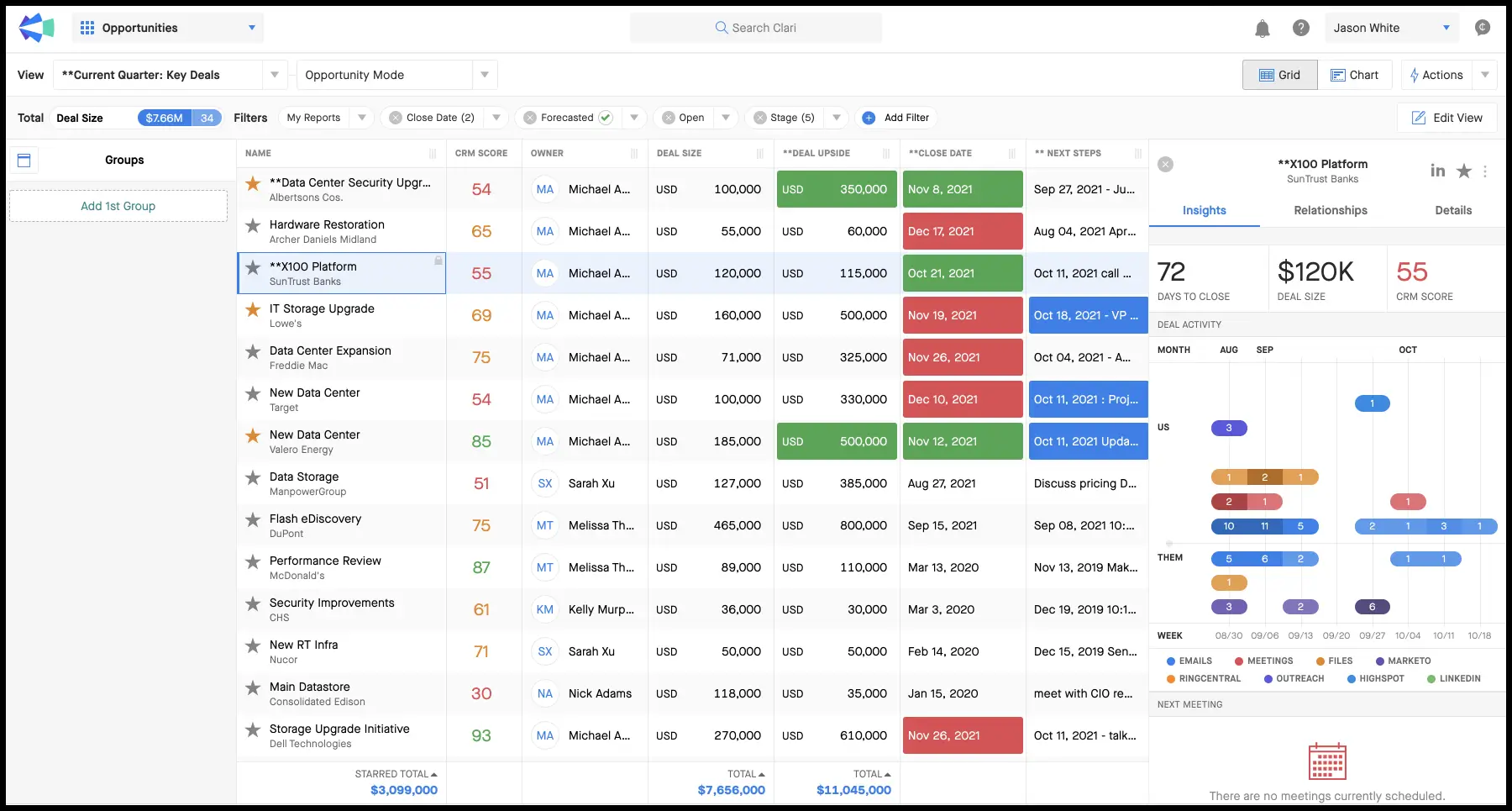
The AI engine identifies patterns that indicate deal health—such as communication frequency, decision-maker involvement, and response times. Managers receive alerts when deals show signs of risk, enabling proactive intervention before opportunities are lost. Clari also generates predictive revenue forecasts that dynamically update as new data is captured, improving financial accuracy and leadership confidence.
Clari’s contribution to AI for B2B sales lies in its ability to unify operational and analytical perspectives. It ensures that both frontline representatives and executives have consistent, data-driven insights into sales performance, turning forecasting into a strategic asset rather than a guessing game.
Conversica
Conversica specializes in AI-driven virtual assistants designed to automate lead engagement and qualification. Its conversational AI interacts naturally with prospects through email and chat, asking follow-up questions, nurturing interest, and routing qualified leads to human sales representatives.
The platform’s AI agents understand tone, intent, and context, ensuring personalized communication that feels authentic to recipients. Conversica integrates with major CRMs, allowing sales teams to scale engagement without sacrificing quality.

For organizations exploring AI for B2B sales, Conversica provides a clear example of how automation can enhance—not replace—human relationships. By managing early-stage interactions and filtering out unqualified leads, it allows sales professionals to focus their energy on high-value conversations, improving overall conversion efficiency.
Collectively, these platforms demonstrate how AI for B2B sales is diversifying across multiple dimensions—forecasting, engagement, analytics, and automation. Each solution contributes to the larger ecosystem by addressing a specific layer of the sales process, creating a foundation for integrated, intelligent selling.
Integration and Interoperability
One of the defining advantages of modern AI for B2B sales systems is their ability to integrate seamlessly across technology stacks. Sales organizations operate within complex digital environments that include CRM, ERP, marketing automation, and customer data platforms. Ensuring that AI tools can connect with these systems is critical for achieving consistent insights and unified workflows.
AI platforms rely on data interoperability to function effectively. When customer data, transaction history, and communication logs are consolidated, AI models can make more accurate predictions and generate relevant recommendations. Integration ensures that every system contributes to a shared data ecosystem, eliminating silos and creating a single source of truth for sales and customer engagement.
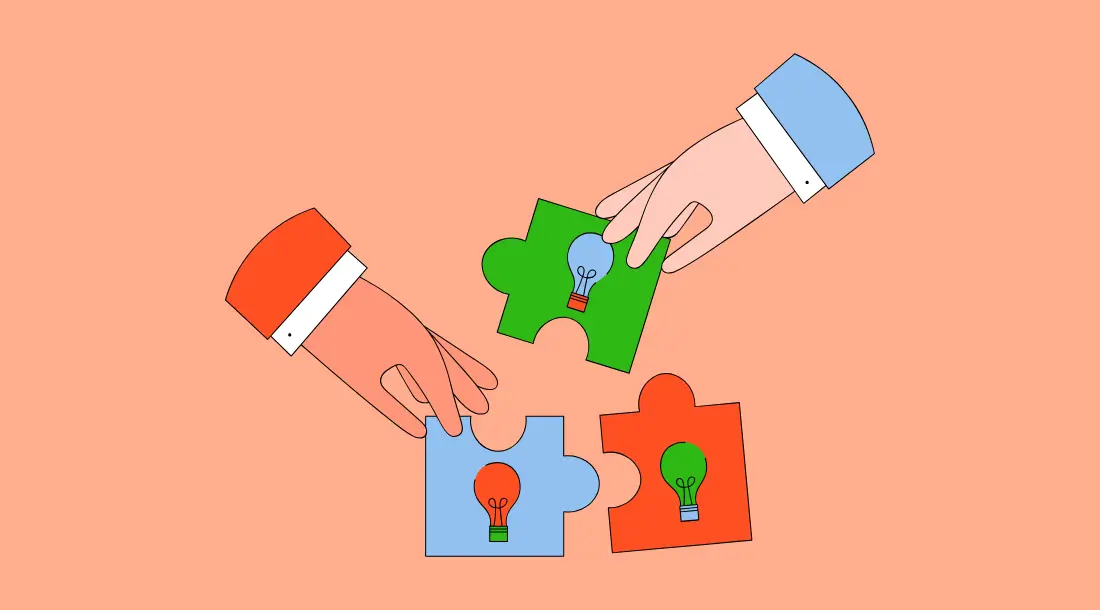
A key enabler of this integration is the increasing use of APIs, low-code, and no-code tools. APIs allow AI systems to exchange information with CRMs and ERPs in real time, updating forecasts and lead scores dynamically. Low-code and no-code platforms, on the other hand, empower non-technical teams to configure integrations without deep programming knowledge. This democratization of integration technology allows sales teams to customize AI workflows quickly and affordably.
For example, a sales manager can connect an AI forecasting tool like Clari with a CRM such as Salesforce, ensuring that deal progression data flows automatically between systems. Similarly, conversational AI tools like Conversica can sync with marketing platforms to track engagement from first contact to conversion, providing end-to-end visibility into the buyer journey.
The future of AI for B2B sales lies in interoperability—where data, intelligence, and action flow freely across departments and platforms. Companies that invest in integrated ecosystems gain not only efficiency but also strategic agility. Instead of managing fragmented systems, they can focus on interpreting AI-driven insights, optimizing performance, and creating cohesive customer experiences across all channels.
Building a Custom AI Stack
As organizations increasingly embrace AI for B2B sales, they face a critical strategic decision: whether to build custom AI systems in-house or adopt pre-built solutions from established vendors. The right approach depends on company size, resources, data maturity, and desired control over AI capabilities.
A build vs. buy decision framework helps guide this choice. Building a custom AI stack offers full control and flexibility, allowing businesses to tailor models and analytics to their unique processes. However, it requires significant investment in infrastructure, data engineering, and AI expertise. In contrast, buying or subscribing to third-party AI platforms offers faster deployment, regular updates, and lower upfront costs—but may involve trade-offs in customization and ownership of proprietary data models.
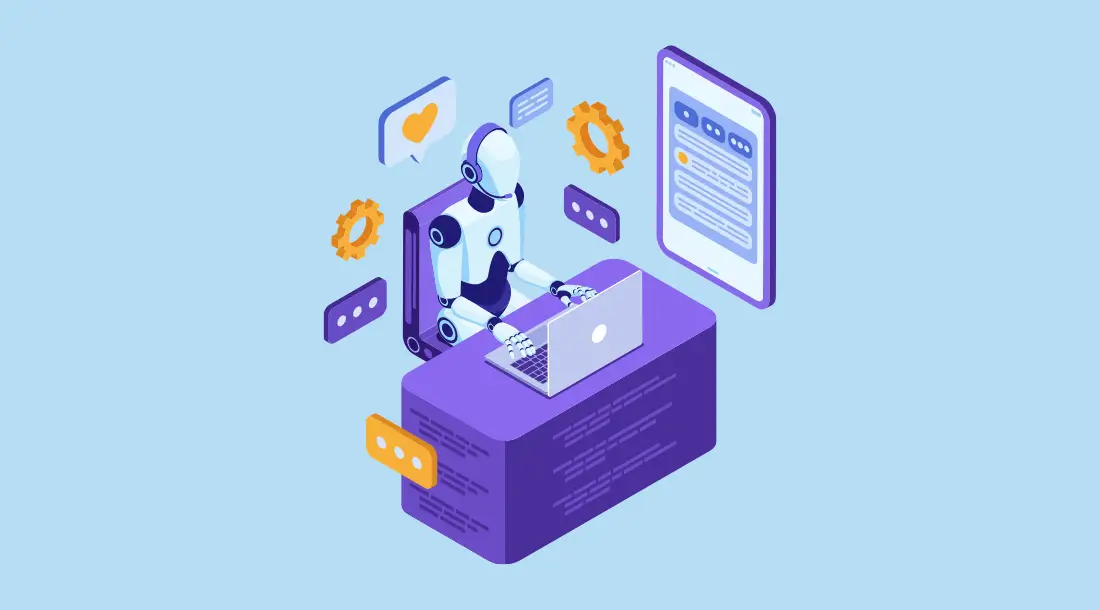
Startups and SMBs often benefit from adopting cloud-based AI solutions like HubSpot AI or Conversica, which provide scalable automation without the complexity of building internal systems. These platforms allow smaller teams to leverage AI for B2B sales quickly and effectively, focusing on growth rather than technical maintenance.
For enterprises with large datasets and complex sales processes, building a custom AI stack may offer long-term advantages. Companies can integrate predictive analytics, natural language processing, and recommendation engines tailored to their business models. Many large organizations combine both approaches—using commercial tools for foundational tasks and layering proprietary AI capabilities for competitive differentiation.
The ultimate goal of building a custom AI stack is to create a unified intelligence layer that connects every aspect of the sales process—from lead generation to contract renewal. Whether built internally or assembled from existing platforms, the ideal system should evolve continuously, learning from data, user feedback, and market shifts.
The evolution of AI for B2B sales is not defined by a single platform or technology but by how effectively these systems interact and adapt. Businesses that strategically combine off-the-shelf solutions, custom integrations, and intelligent automation will lead the next generation of data-driven, customer-centric B2B sales operations.
Implementation Strategy for AI in B2B Sales
Implementing AI for B2B sales requires more than just adopting new technology—it demands a well-structured, data-driven strategy that aligns with a company’s existing processes, culture, and long-term objectives. Unlike B2C settings, B2B environments are inherently more complex, involving longer sales cycles, multiple decision-makers, and diverse data sources. Therefore, organizations must approach AI implementation as a phased transformation rather than a simple upgrade.
AI for B2B sales can deliver exponential value—improving lead prioritization, forecasting accuracy, and sales efficiency—but only when built on a strong foundation of clear goals, quality data, and cross-functional collaboration.
Step-by-Step Deployment
Deploying AI for B2B sales is most effective when approached methodically. Each step plays a critical role in ensuring the technology aligns with business objectives and integrates seamlessly into the company’s broader sales ecosystem. The goal is to transform data into insight and insight into action—while minimizing disruption to ongoing sales operations.
Below is a structured, step-by-step approach for successful AI deployment in B2B sales:
- Define measurable business goals: The foundation of every successful AI initiative lies in establishing clear, quantifiable goals. Organizations must identify what they aim to achieve with AI for B2B sales—whether it’s increasing lead conversion rates, improving forecast accuracy, reducing administrative workload, or enhancing personalization. Defining measurable KPIs ensures that the implementation remains outcome-focused and provides a benchmark for evaluating ROI. Without clear targets, AI efforts can easily become scattered, delivering insights that lack actionable value.
- Audit existing data infrastructure: Data serves as the fuel that powers AI for B2B sales. Before any model can be trained or deployed, companies need to assess the quality, completeness, and accessibility of their data. This audit should evaluate sources such as CRM systems, ERP databases, marketing automation tools, and customer service logs. In many cases, businesses discover that their data is fragmented across silos or inconsistent in structure. Cleaning, normalizing, and unifying this data is critical to ensure reliable AI outputs. A strong data foundation prevents the “garbage in, garbage out” problem, where poor-quality inputs lead to misleading insights.
- Choose an AI vendor or partner: Selecting the right partner is one of the most strategic decisions in the AI deployment journey. Organizations can choose between building custom AI systems in-house, adopting existing AI platforms (like Salesforce Einstein or Clari), or partnering with specialized AI vendors. Each option has its trade-offs—custom solutions offer greater control but require substantial expertise, while vendor-based solutions ensure faster time-to-market and ongoing support. The choice should depend on the company’s size, data maturity, and technical capacity. Regardless of the approach, it’s essential to evaluate vendors based on transparency, integration capabilities, scalability, and data governance compliance.
- Pilot program and model training: Before full-scale deployment, it’s wise to run a pilot program that validates the AI system’s functionality, accuracy, and impact. This phase allows organizations to test algorithms using real-world data in a controlled environment. During this stage, teams can refine model parameters, identify potential biases, and ensure outputs align with sales objectives. Pilots also help gain stakeholder buy-in, as early success stories demonstrate tangible benefits such as improved deal prioritization or better forecasting. Continuous monitoring and iterative model training are crucial, as AI systems learn and adapt over time based on feedback loops and updated datasets.
- Scale adoption and monitor performance: Once the pilot proves successful, the next step is scaling AI across the organization. This involves expanding the system to more departments, sales teams, or regions while ensuring data integration across all relevant systems. Training programs should be conducted to familiarize employees with new tools and workflows. At this stage, establishing a governance framework is essential to monitor ongoing performance, data integrity, and user compliance. Tracking metrics—such as conversion improvement, deal velocity, and customer satisfaction—helps validate the AI system’s effectiveness and guides future optimization efforts.
When executed properly, these steps enable companies to move from experimentation to operational excellence. A structured, iterative deployment process ensures that AI for B2B sales becomes a long-term growth enabler rather than a short-lived trend. The combination of measurable goals, reliable data, and continuous improvement builds a self-sustaining AI ecosystem that scales intelligently with business growth.
Common Pitfalls
Despite the significant promise of AI for B2B sales, many organizations struggle to realize its full potential due to avoidable mistakes. The path to successful implementation is fraught with challenges related to data management, alignment, and user adoption. Recognizing these pitfalls early allows companies to design proactive strategies that mitigate risk and ensure sustainable ROI.
The following are the most common pitfalls that can derail AI deployment in B2B sales:
- Inadequate data quality: Poor data quality remains one of the biggest barriers to effective AI adoption. Many organizations underestimate how fragmented, outdated, or inconsistent their data can be across departments. When CRM systems contain incomplete contact information, duplicated entries, or outdated sales activities, AI models produce inaccurate predictions. For AI for B2B sales to perform effectively, companies must prioritize data cleaning, standardization, and enrichment before model training begins. High-quality data ensures that insights are reliable, actionable, and reflective of real market conditions.
- Misaligned objectives between sales and marketing: One of the most frequent organizational challenges is the lack of alignment between sales and marketing teams. Marketing often focuses on generating leads, while sales prioritizes closing deals—yet both rely on AI insights derived from shared data. If these departments do not collaborate on defining goals, KPIs, and success criteria, AI systems may optimize for conflicting outcomes. For example, marketing’s AI models might prioritize lead quantity, while sales needs lead quality. To avoid this misalignment, businesses should establish shared objectives and governance structures that ensure all teams operate toward common outcomes.
- Underestimating training and change management: Implementing AI for B2B sales requires a cultural shift as much as a technological one. Many organizations invest heavily in AI tools but neglect to train employees on how to use them effectively. Without proper onboarding, sales teams may resist adopting AI insights or continue relying on intuition instead of data-driven recommendations. Comprehensive change management programs—covering technical training, user support, and communication—are vital for encouraging adoption. Moreover, involving sales teams early in the process fosters ownership and confidence, ensuring that AI becomes an enabler rather than a perceived threat.
Each of these pitfalls underscores a broader truth: AI for B2B sales is not a plug-and-play solution. It thrives in environments where data integrity, collaboration, and continuous learning are embedded into the company culture. Organizations that rush implementation without addressing these foundational issues risk producing inaccurate forecasts, creating internal friction, and losing stakeholder trust.

To mitigate these risks, companies should treat AI integration as a strategic journey—one that evolves alongside technological maturity and market dynamics. Building cross-functional governance teams, conducting regular data audits, and maintaining transparent communication help ensure that AI initiatives remain aligned with business priorities.
The most successful implementations of AI for B2B sales are those grounded in discipline and foresight. By recognizing common pitfalls and investing in the right processes and people, organizations can unlock AI’s full potential to transform not just sales outcomes, but the entire decision-making fabric of the enterprise.
Future Outlook of AI for B2B Sales
As AI for B2B sales continues to evolve, it is set to fundamentally reshape how enterprises engage, negotiate, and deliver value to their clients. The rapid acceleration of generative AI, predictive analytics, and automation is not only transforming workflows—it is redefining what sales excellence means in an increasingly digital-first economy. Over the next decade, B2B sales organizations will move from reactive, data-supported strategies to proactive, fully autonomous systems capable of anticipating buyer needs, negotiating terms, and optimizing long-term relationships.
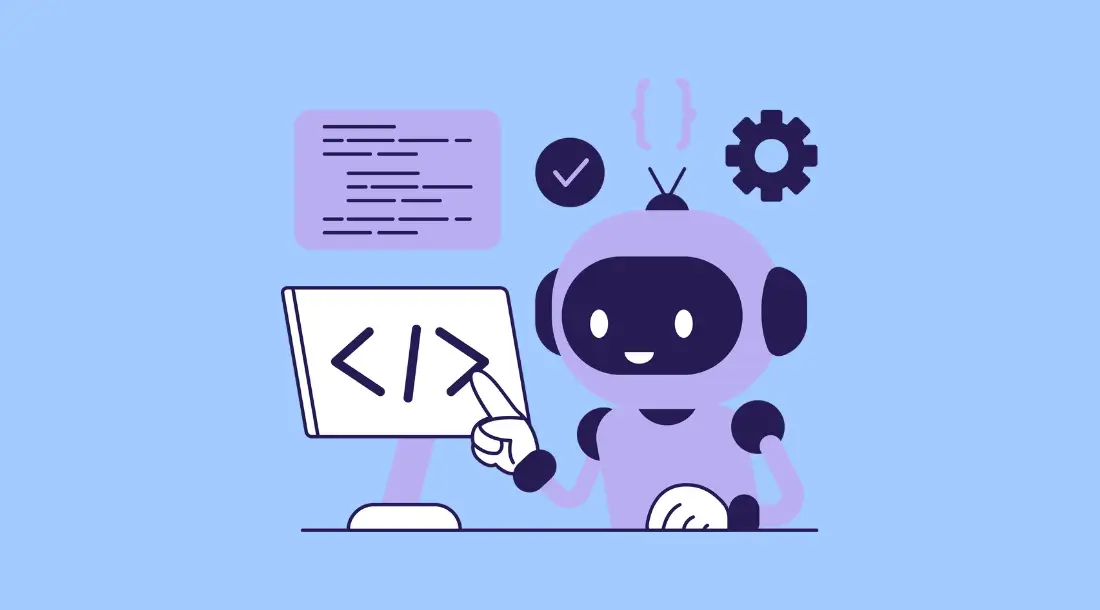
The future of AI for B2B sales will be characterized by intelligent collaboration between human and machine, where AI takes on the heavy cognitive load of analysis and recommendation, allowing sales professionals to focus on strategy and empathy-driven communication. Beyond productivity, AI will play a crucial role in aligning business practices with sustainability and ethical imperatives, marking a shift from transactional selling to value-based partnerships.
Emerging Trends
The next wave of AI for B2B sales innovation is being driven by technologies that go beyond automation to cognitive intelligence—systems capable of understanding context, intent, and human behavior at an unprecedented depth. These advancements are redefining what sales technology can achieve, pushing the boundaries of personalization, negotiation, and corporate responsibility.
Key emerging trends illustrate how AI will continue to advance B2B sales strategy and operations:
- Generative AI agents for negotiation: One of the most transformative developments in AI for B2B sales is the emergence of generative AI agents designed for real-time negotiation and communication. These AI agents can simulate human-like reasoning, analyze counterpart behavior, and propose mutually beneficial terms during contract discussions. For instance, an AI agent can automatically suggest alternative pricing models or delivery timelines based on historical deal data, client sentiment, and organizational profit margins. In complex enterprise sales, where negotiations often involve multiple stakeholders, generative agents can ensure consistency, compliance, and speed—reducing friction while enhancing customer experience. In the long term, these agents will serve as extensions of sales teams, capable of conducting entire preliminary discussions autonomously before human representatives intervene for final approval.
- Predictive buyer intent analytics: The future of AI for B2B sales will rely heavily on understanding not just what customers have done but what they are likely to do next. Predictive buyer intent analytics leverages AI models trained on vast behavioral datasets—website interactions, content engagement, CRM histories, and even external market signals—to anticipate when prospects are ready to buy. By identifying early indicators of purchase intent, such as increased engagement with product documentation or competitor comparisons, sales teams can act proactively rather than reactively. These insights allow businesses to allocate resources more efficiently, prioritize high-value leads, and deliver personalized outreach precisely when prospects are most receptive. Over time, predictive intent models will evolve into real-time orchestration engines that dynamically adjust marketing and sales actions across the entire customer lifecycle.
- AI-driven sustainability reporting in enterprise sales: Sustainability has become a defining factor in corporate procurement and partnership decisions. As enterprises increasingly demand transparency in environmental, social, and governance (ESG) performance, AI for B2B sales is stepping in to automate and enhance sustainability reporting. AI systems can collect, analyze, and visualize environmental impact metrics across supply chains, helping sales teams demonstrate compliance with ESG standards and communicate sustainability commitments to clients. By integrating sustainability analytics directly into sales proposals and product recommendations, AI empowers businesses to align their selling strategies with global sustainability goals. In the coming years, sustainability-driven sales intelligence will not only be a differentiator but a requirement for winning contracts in regulated industries.
Together, these emerging trends illustrate that the evolution of AI for B2B sales is no longer about replacing manual tasks—it is about augmenting human intelligence, driving ethical engagement, and fostering data-driven trust between businesses. The convergence of generative AI, predictive analytics, and sustainability technology will create a new era of adaptive, intelligent sales ecosystems capable of evolving alongside customer expectations and market shifts.
The Next Decade
Looking ahead, the next decade will mark a pivotal transition from AI-assisted sales to AI-orchestrated ecosystems. The advancements in generative AI, immersive technologies, and governance frameworks will push B2B organizations to rethink how they structure, train, and scale their sales operations. The boundary between human decision-making and machine intelligence will blur, ushering in a new paradigm of collaboration and continuous optimization.
Several transformative developments are expected to define the future of AI for B2B sales:
- Fully autonomous sales assistants: By the early 2030s, the evolution of AI for B2B sales will likely give rise to fully autonomous sales assistants capable of managing end-to-end sales processes. These AI systems will handle everything from lead identification and qualification to proposal generation, follow-up communication, and contract negotiation. Unlike today’s chatbots or CRM automation tools, autonomous sales assistants will combine generative reasoning, emotional intelligence, and real-time decision-making to interact seamlessly with human buyers. They will learn from every engagement, continuously refining their approach to reflect cultural nuances, negotiation styles, and individual preferences. In complex B2B environments, this autonomy will drastically reduce sales cycles, improve win rates, and enable scalability across regions and industries without compromising personalization.
- Integration of AI with AR/VR for immersive demos: The future of product demonstration and client engagement in B2B sales will merge AI with augmented and virtual reality. Using AR/VR, AI systems will dynamically generate immersive, interactive product demos tailored to each client’s specific needs. For instance, a manufacturing supplier could use AI-generated simulations to showcase customized machinery configurations within the client’s own factory environment. In the context of enterprise software, AI-driven avatars could guide clients through live product environments, adjusting explanations based on real-time engagement metrics. This integration of AI for B2B sales with AR/VR will redefine the concept of experiential selling, allowing buyers to visualize outcomes and ROI before making commitments. Such experiences will strengthen trust, shorten decision cycles, and bridge the gap between technical complexity and buyer understanding.
- AI governance and ethical frameworks: As AI becomes central to B2B sales operations, organizations will need robust governance structures to ensure ethical, transparent, and compliant use of AI technologies. The growing reliance on data-driven decision-making introduces risks related to bias, privacy, and accountability. AI governance frameworks will establish clear policies on data usage, algorithmic transparency, and human oversight. In addition, regulatory bodies around the world are expected to set new standards for responsible AI practices in enterprise sales, requiring organizations to audit AI models for fairness and explainability. Ethical AI for B2B sales will focus not only on compliance but also on building customer trust—ensuring that AI recommendations, pricing models, and negotiation tactics remain aligned with corporate values and societal norms.
In the next decade, the success of AI for B2B sales will depend on the synergy between automation and authenticity. Businesses that integrate AI across their operations while maintaining ethical, human-centered principles will gain a sustainable competitive edge. The evolution will not merely be technological—it will be philosophical, redefining what it means to sell intelligently, responsibly, and collaboratively in the digital age.
The coming years promise an ecosystem where machines handle complexity and humans focus on creativity and empathy. In this future, AI for B2B sales will serve not as a replacement for human intuition but as its most powerful amplifier—transforming every sales interaction into an opportunity for deeper understanding, greater efficiency, and shared growth.
Conclusion
AI for B2B sales is no longer an experimental concept—it has become a strategic necessity that is reshaping how enterprises connect, negotiate, and grow in an increasingly digital economy. Across the chapters of this comprehensive exploration, it is clear that artificial intelligence is redefining every aspect of the B2B sales ecosystem—from lead generation and forecasting to account management and customer engagement. The integration of data science, predictive analytics, and generative AI has transformed the traditional sales funnel into a dynamic, self-learning system capable of anticipating buyer needs, optimizing performance, and delivering personalized experiences at scale.
The major insights of this article point to one overarching truth: AI for B2B sales is a transformative force that transcends automation. It is not simply about replacing manual tasks with algorithms but about unlocking new dimensions of intelligence that drive strategic decisions. From predictive lead scoring and prescriptive deal management to AI-driven account-based marketing and real-time customer analytics, businesses are leveraging AI to create faster, more precise, and more adaptive sales environments. Case studies from global leaders such as Salesforce, HubSpot, IBM, Oracle, and SAP demonstrate how AI implementation has elevated forecasting accuracy, reduced operational inefficiencies, and enabled deeper customer understanding. These successes reveal a powerful shift—B2B organizations are moving beyond reactive selling toward proactive, intelligence-driven engagement.
This evolution marks the transition from data-driven to intelligence-driven B2B sales. While data once served as the backbone of decision-making, intelligence has become its brain—interpreting patterns, predicting outcomes, and recommending the next best action. In the past, businesses relied on data dashboards and manual analysis to inform their strategies. Now, AI for B2B sales integrates real-time insights directly into workflows, empowering teams to act instantly and with confidence. Predictive analytics identifies buyer intent before it becomes visible, prescriptive algorithms guide representatives through optimal deal strategies, and generative AI personalizes proposals and communications at scale. The result is a new form of sales intelligence—one that blends human creativity with machine precision to deliver outcomes that were previously unimaginable.
To thrive in this new landscape, businesses must prepare strategically for AI-led transformation. Successful adoption of AI for B2B sales begins with a solid foundation: well-defined business goals, high-quality data, and a culture of collaboration between sales, marketing, and operations. Organizations must move away from siloed systems and embrace integrated ecosystems where CRM, ERP, and AI platforms work together to create seamless data flows. Moreover, companies must prioritize talent development and change management. The future sales professional is not just a negotiator but a data interpreter—someone who understands how to leverage AI insights to build stronger relationships and deliver tailored solutions. Investing in continuous training, transparent governance, and ethical AI frameworks ensures that technological advancement goes hand in hand with human empowerment.
Ultimately, the future of AI for B2B sales rests on trust, collaboration, and human expertise. As AI systems take on more decision-making responsibilities, trust becomes the cornerstone of adoption. Businesses must ensure that their AI systems operate transparently, ethically, and in alignment with customer values. Collaboration between humans and machines will be the defining feature of next-generation sales teams—where AI handles analysis and logistics while humans provide empathy, intuition, and creativity. This partnership will elevate the role of the salesperson from transactional executor to strategic advisor, reinforcing the human element as the heart of every business relationship.
In the coming years, AI for B2B sales will evolve into an intelligent partner—an adaptive force that not only enhances efficiency but also deepens customer understanding and strengthens long-term loyalty. Enterprises that embrace this transformation today will define the standards of excellence tomorrow, shaping a sales ecosystem that is faster, smarter, and more human than ever before. The convergence of intelligence, ethics, and collaboration will mark a new era of enterprise growth—one where AI amplifies human potential and turns every customer interaction into a moment of strategic opportunity.


